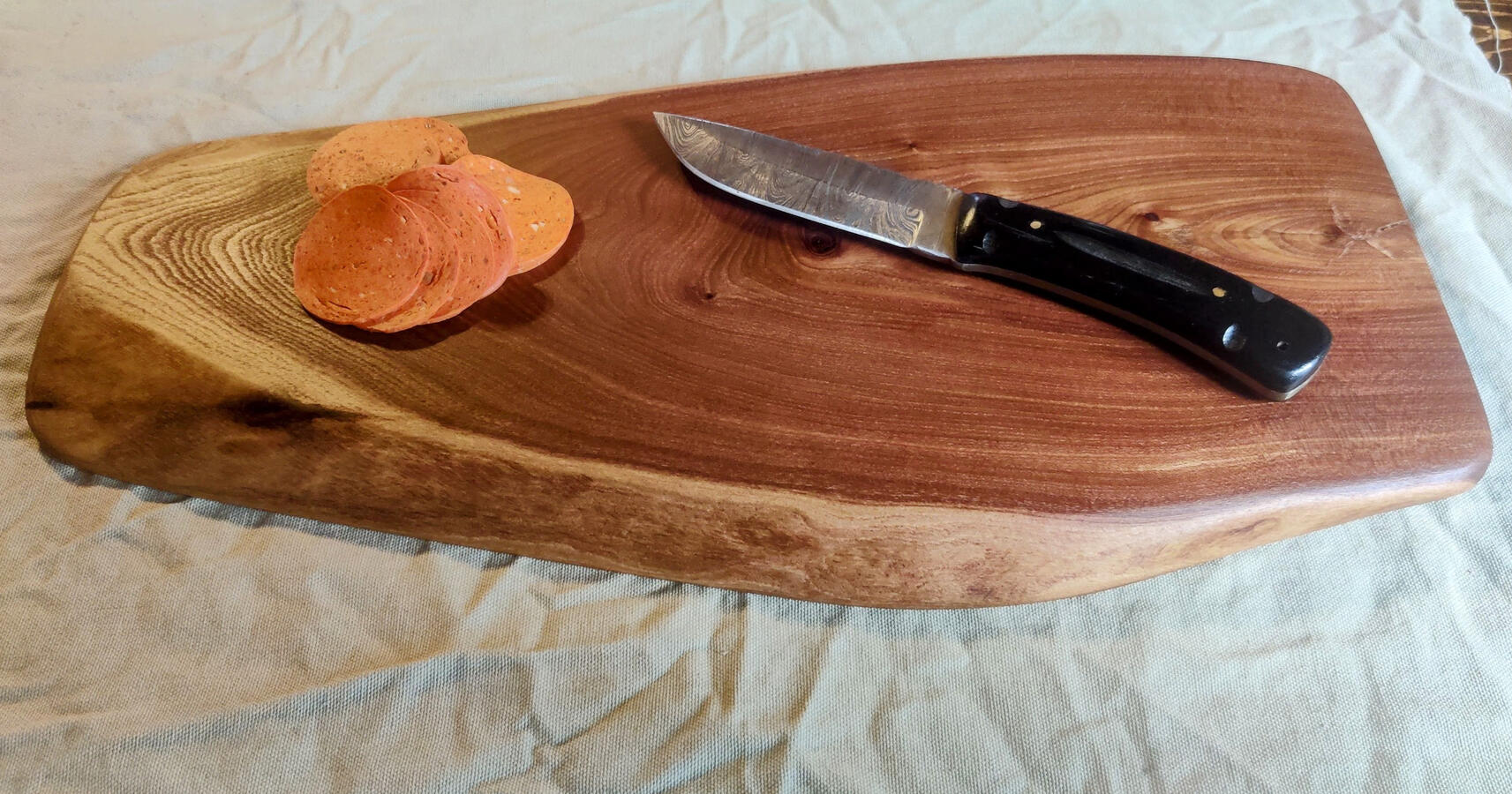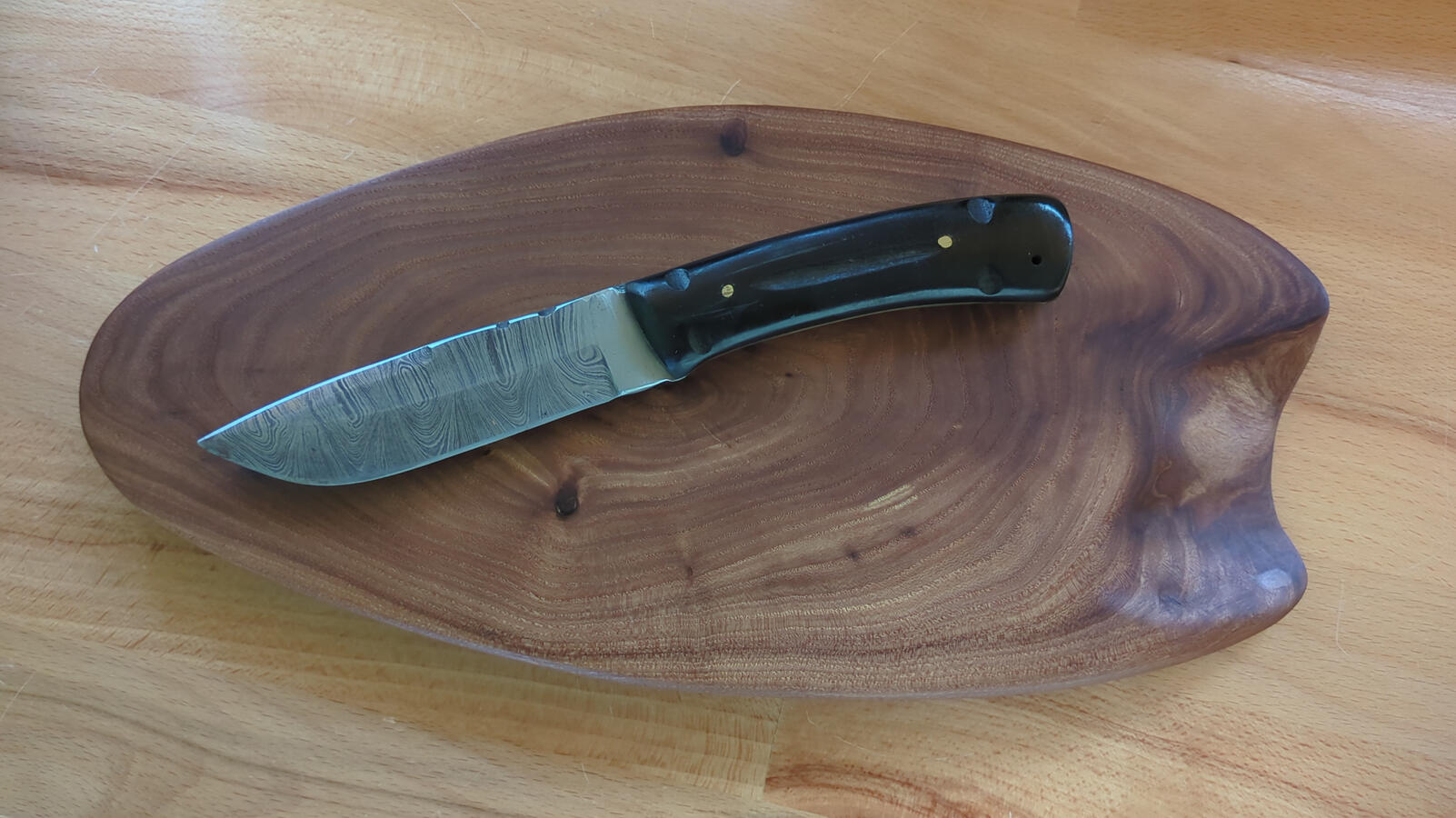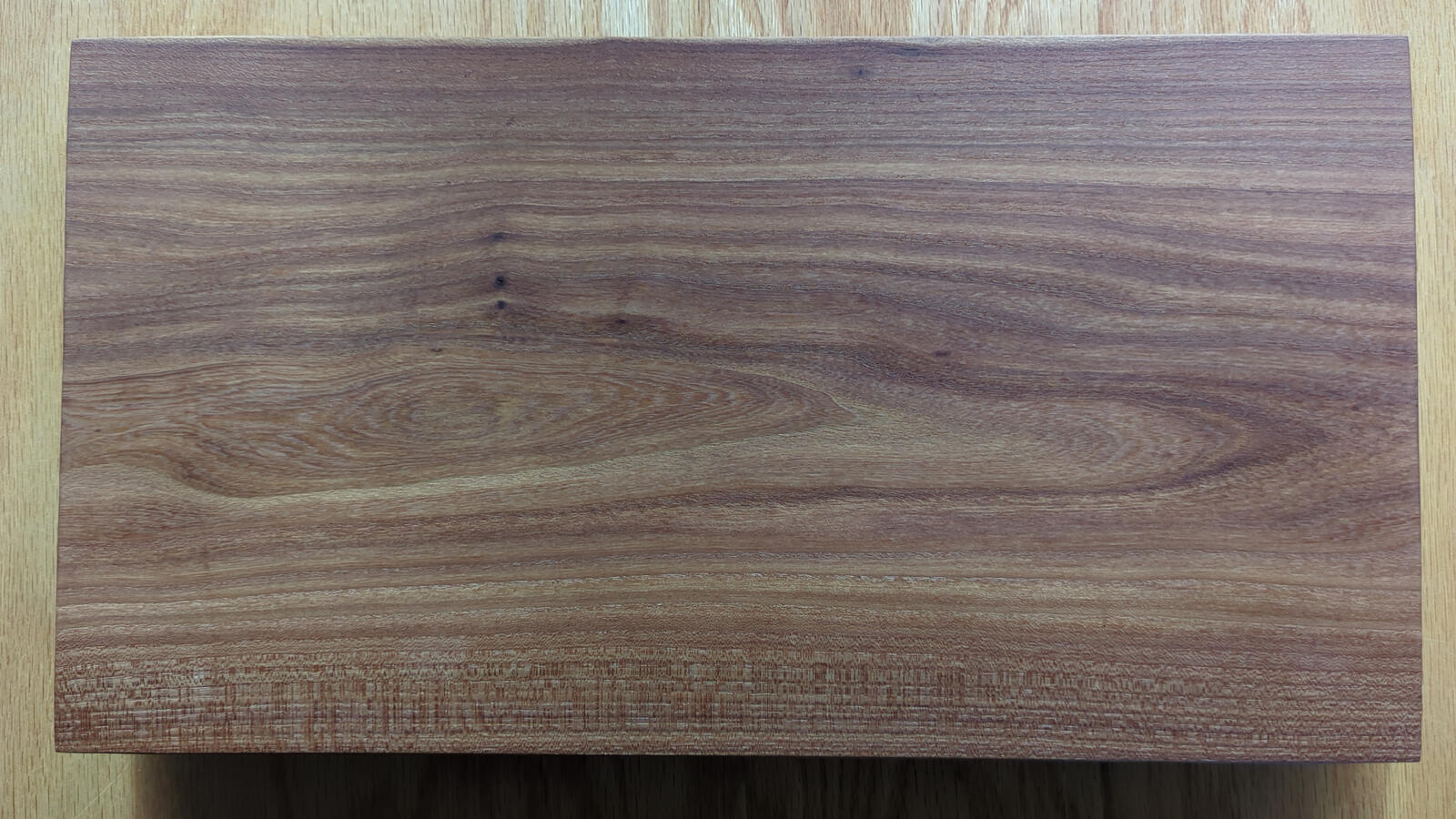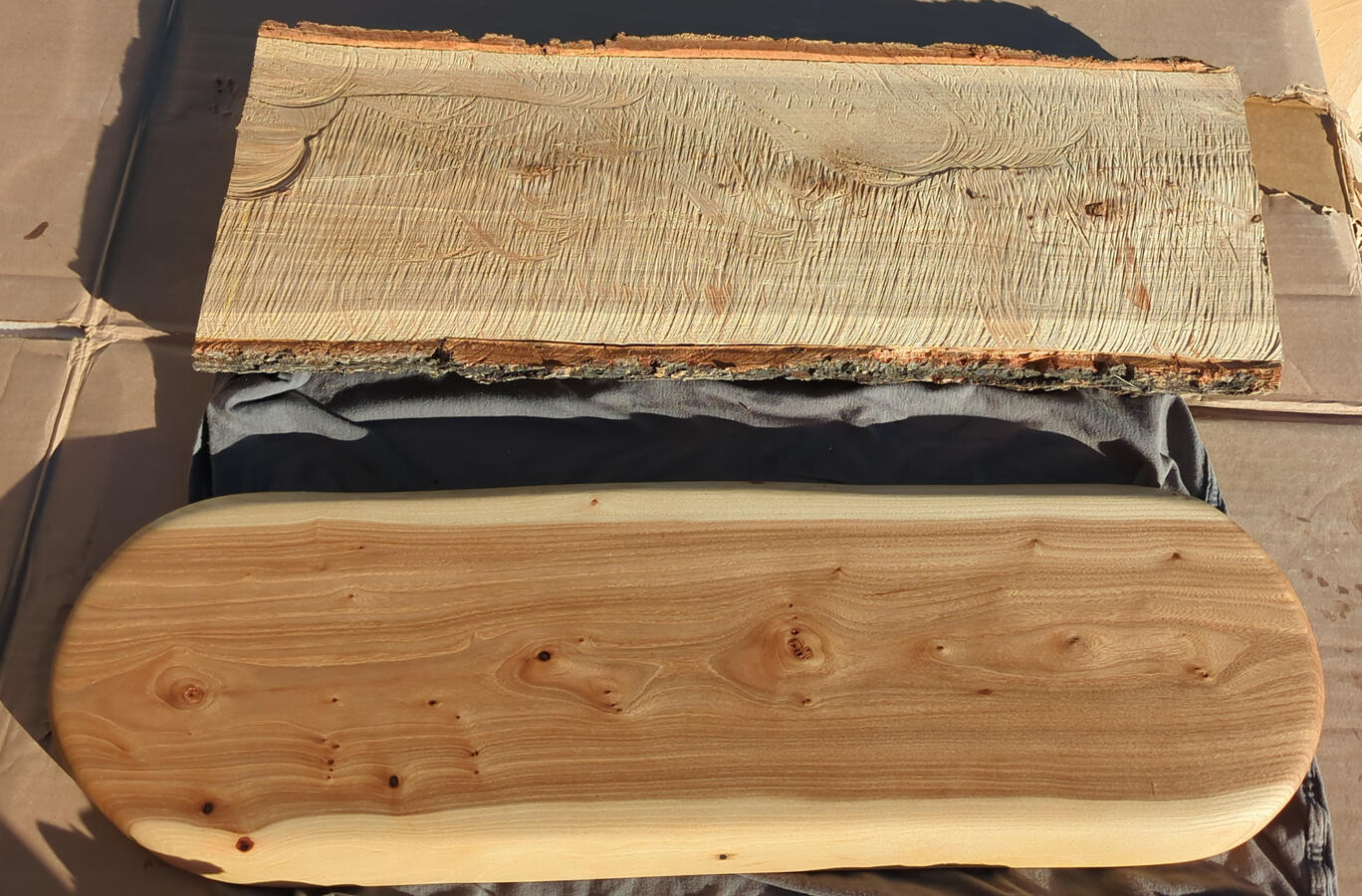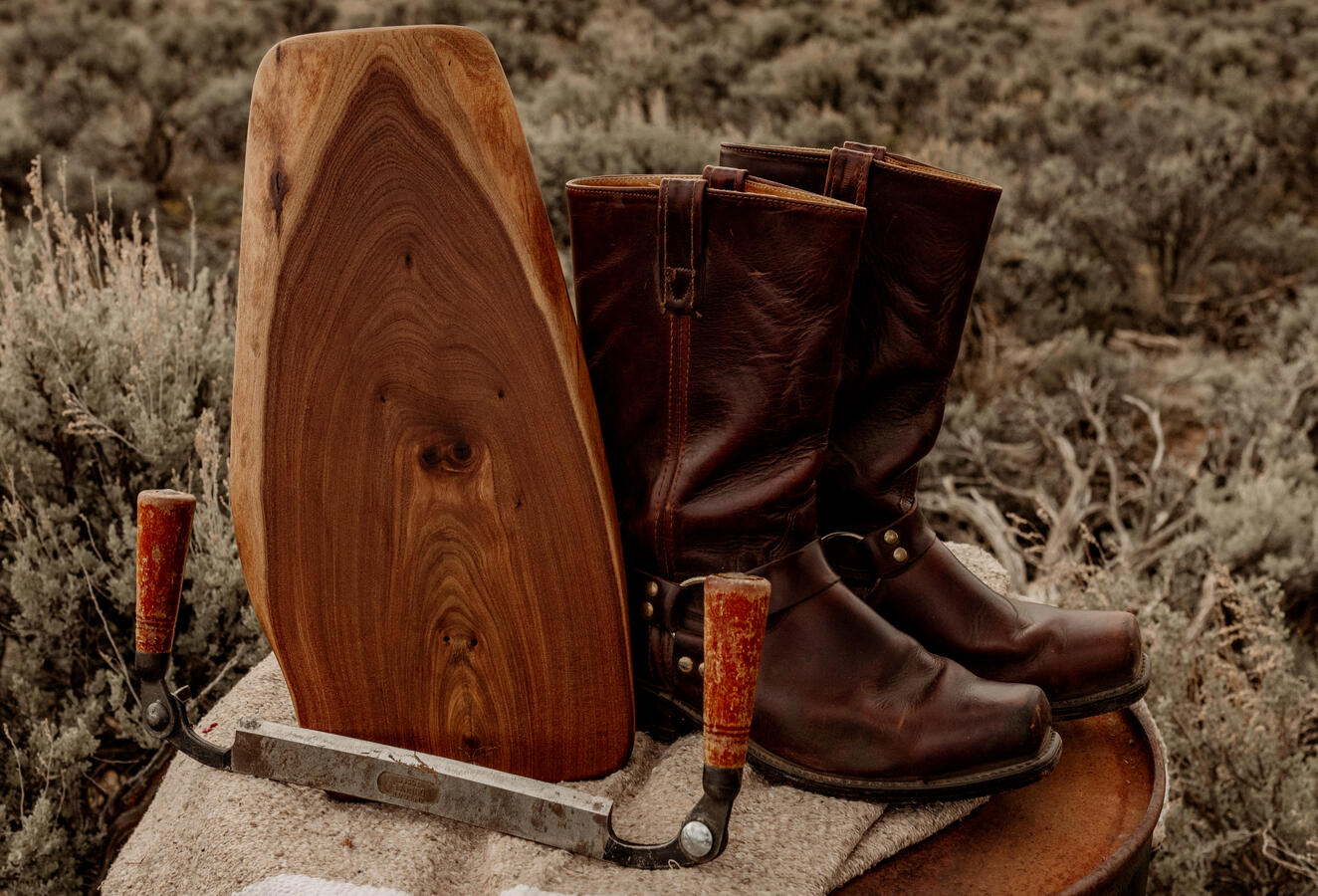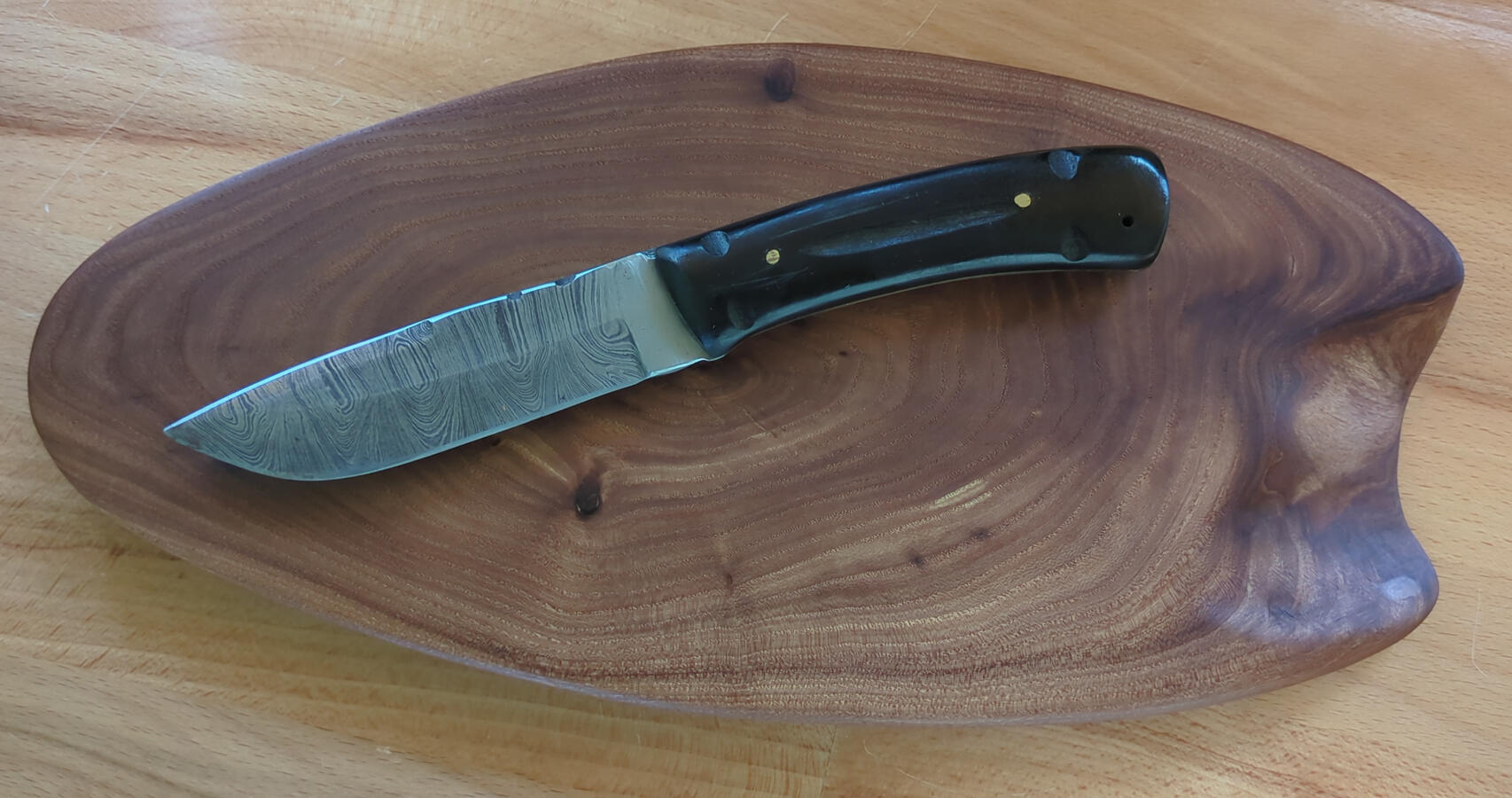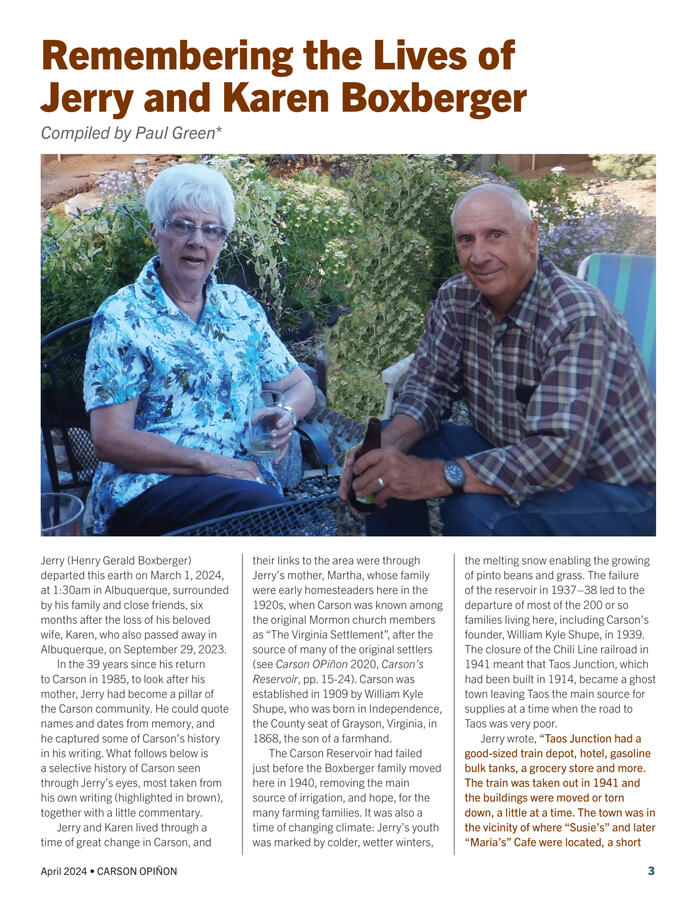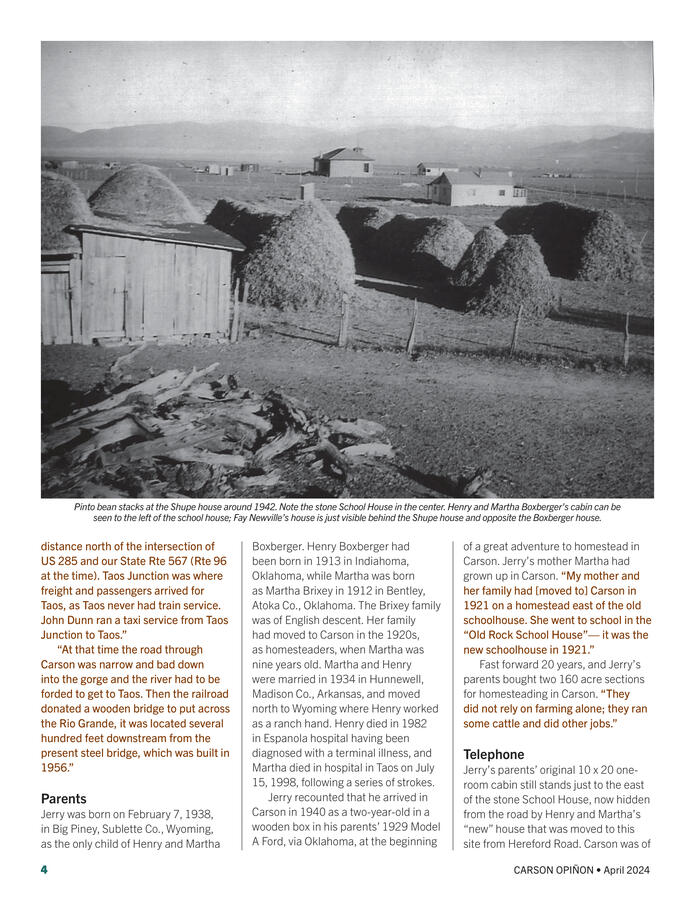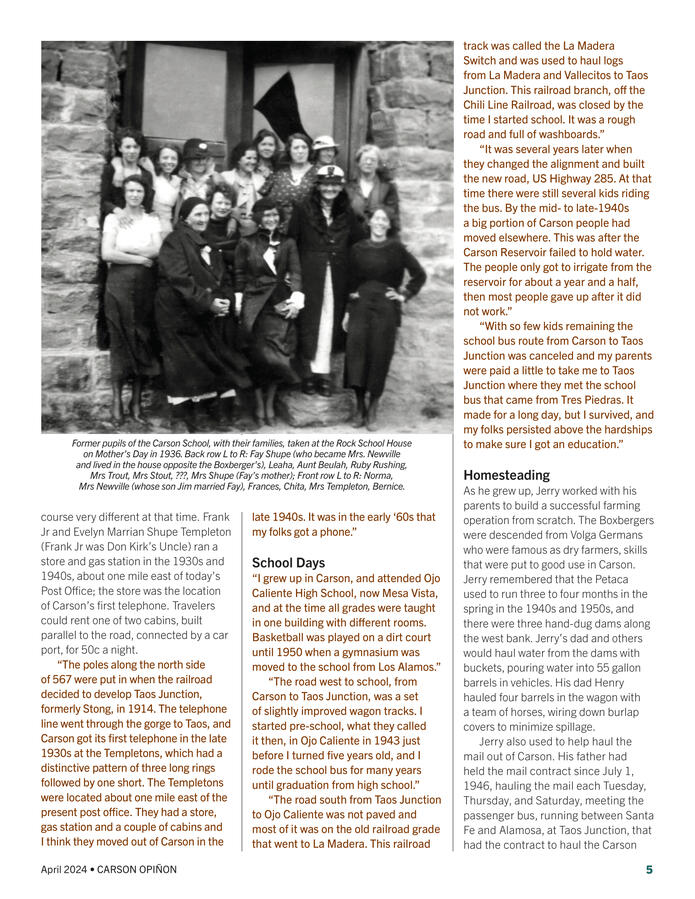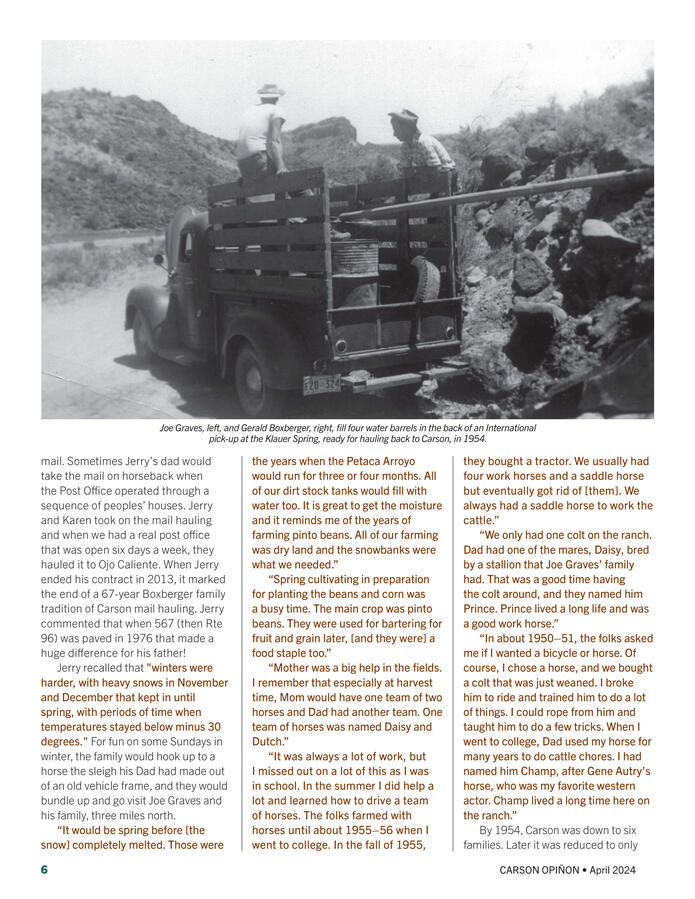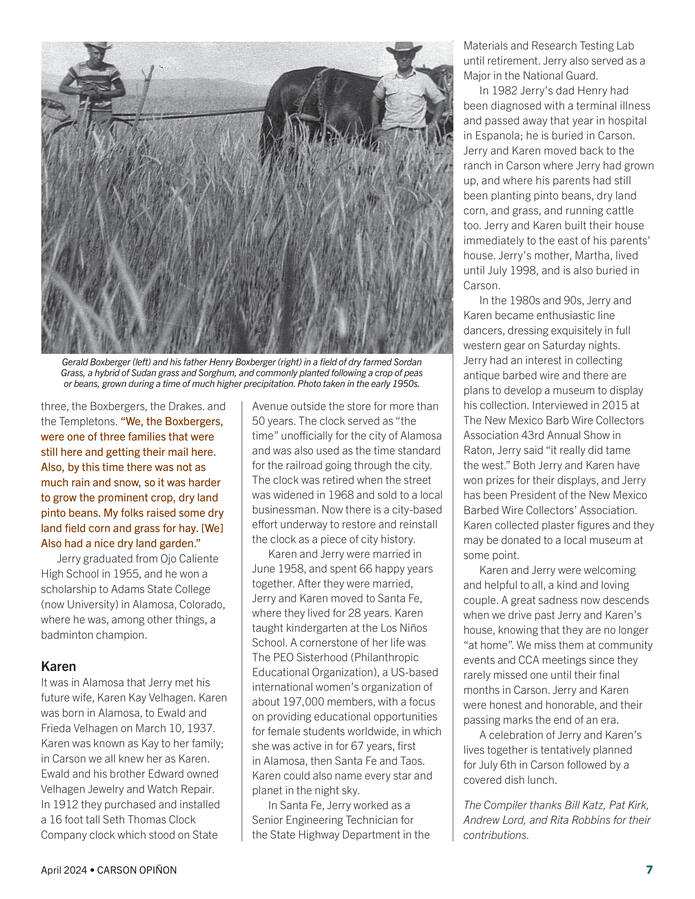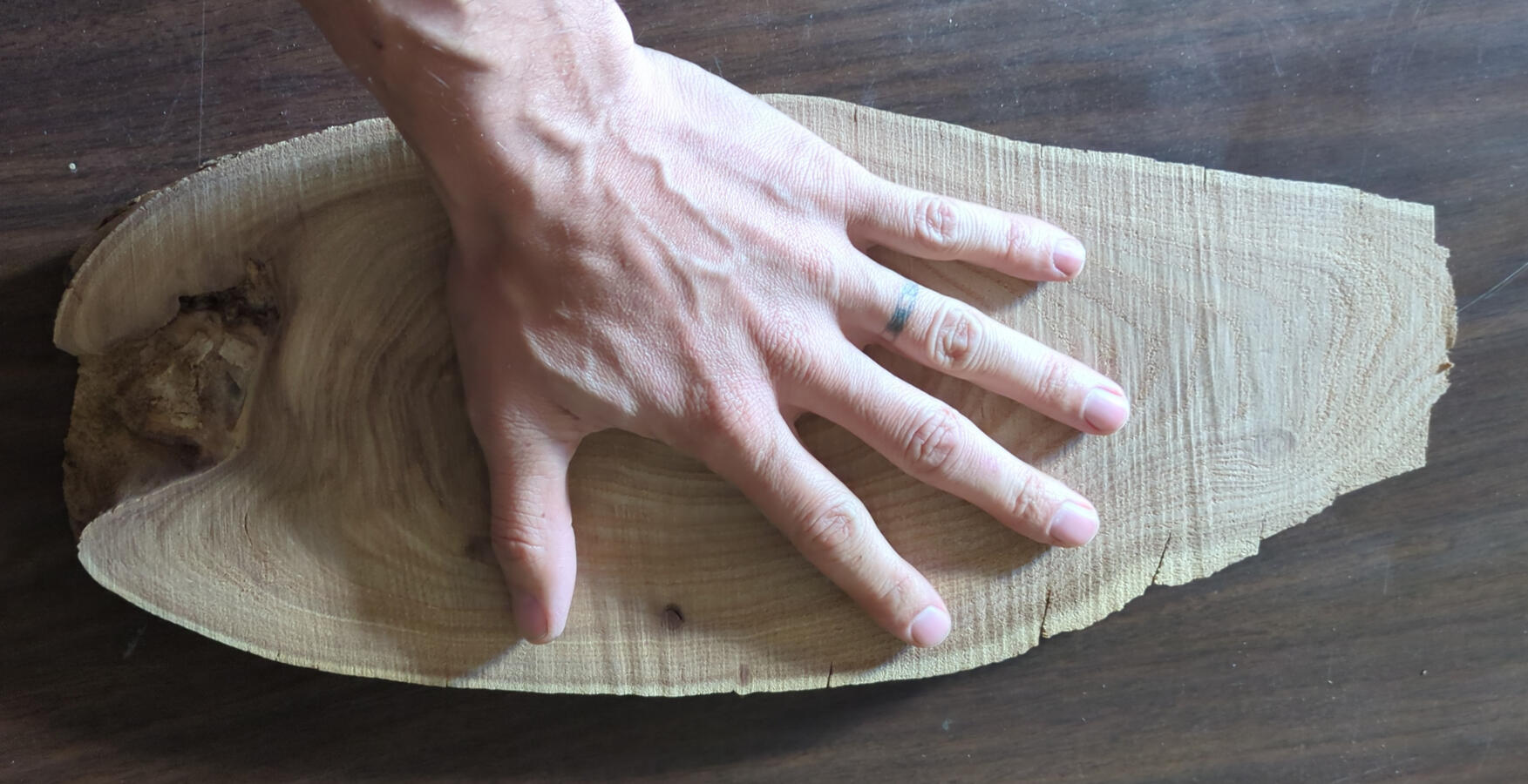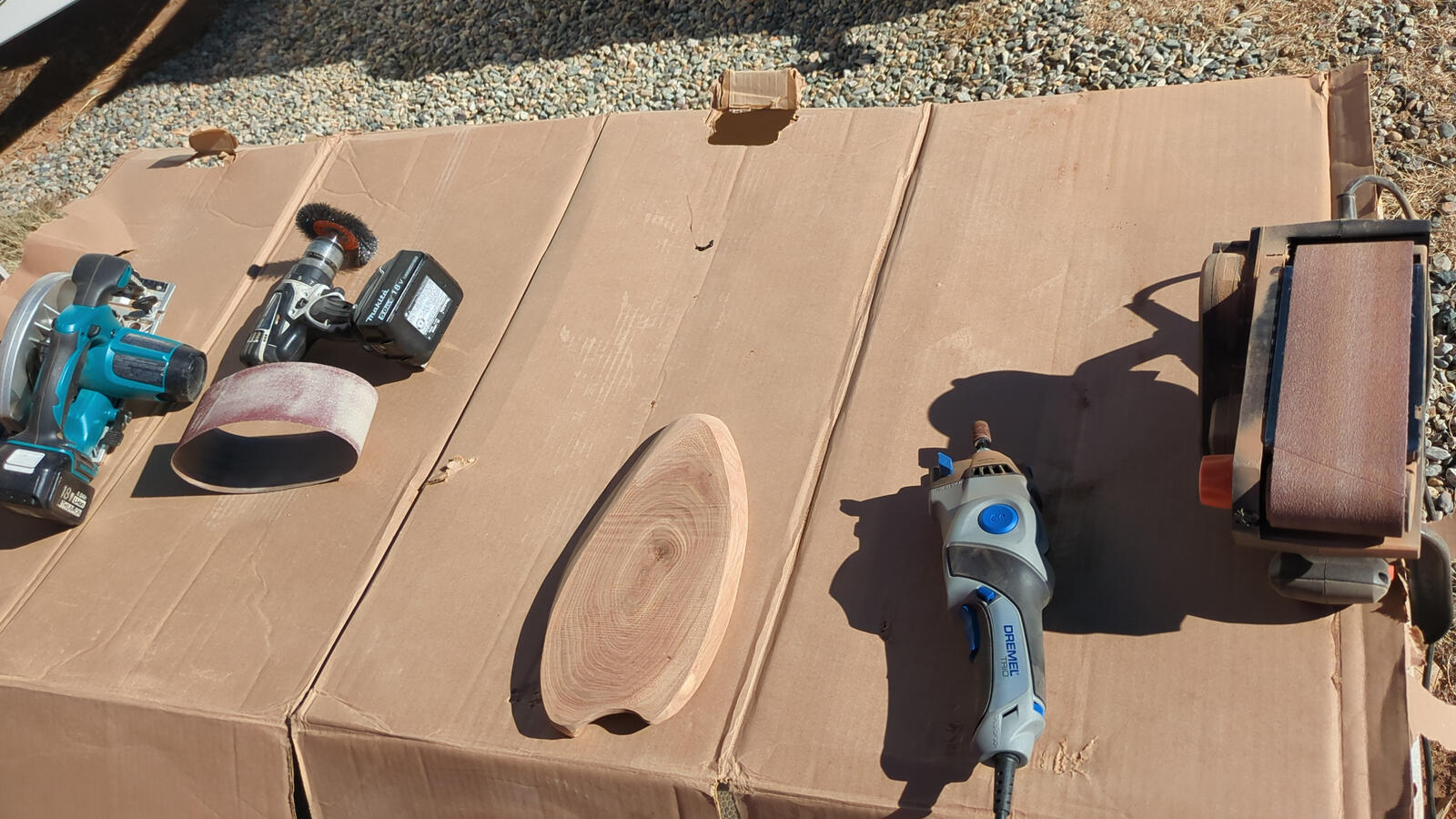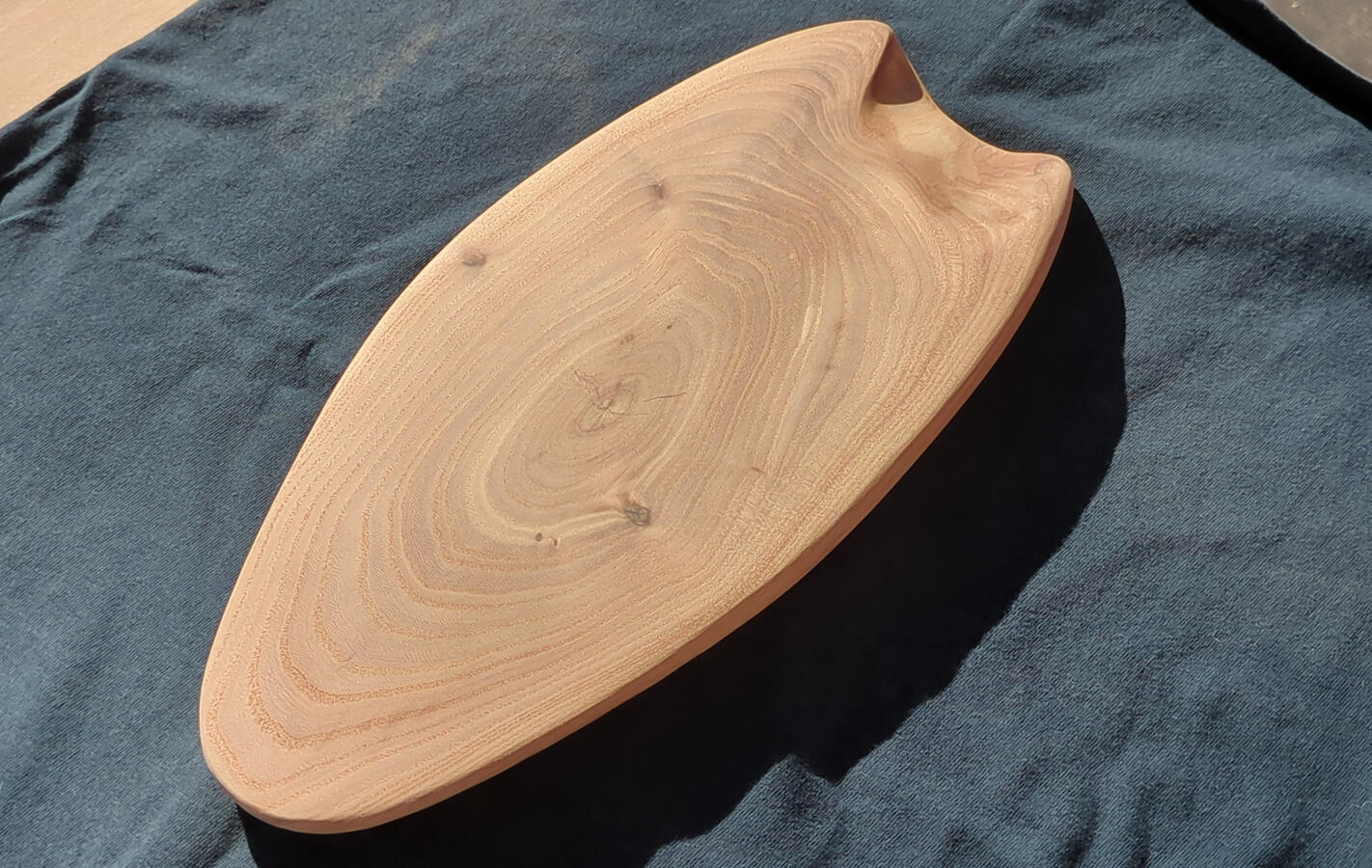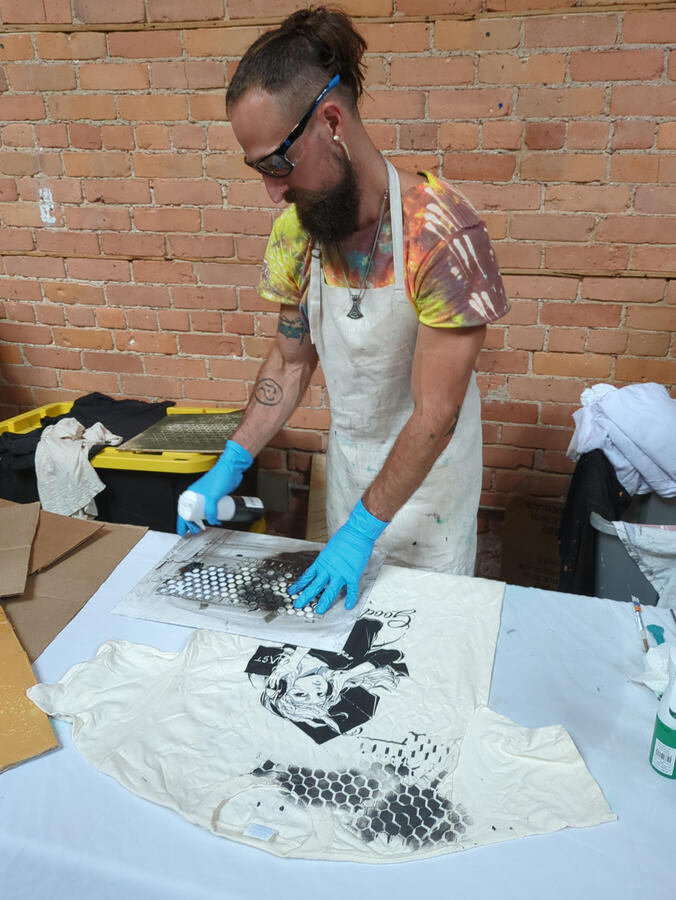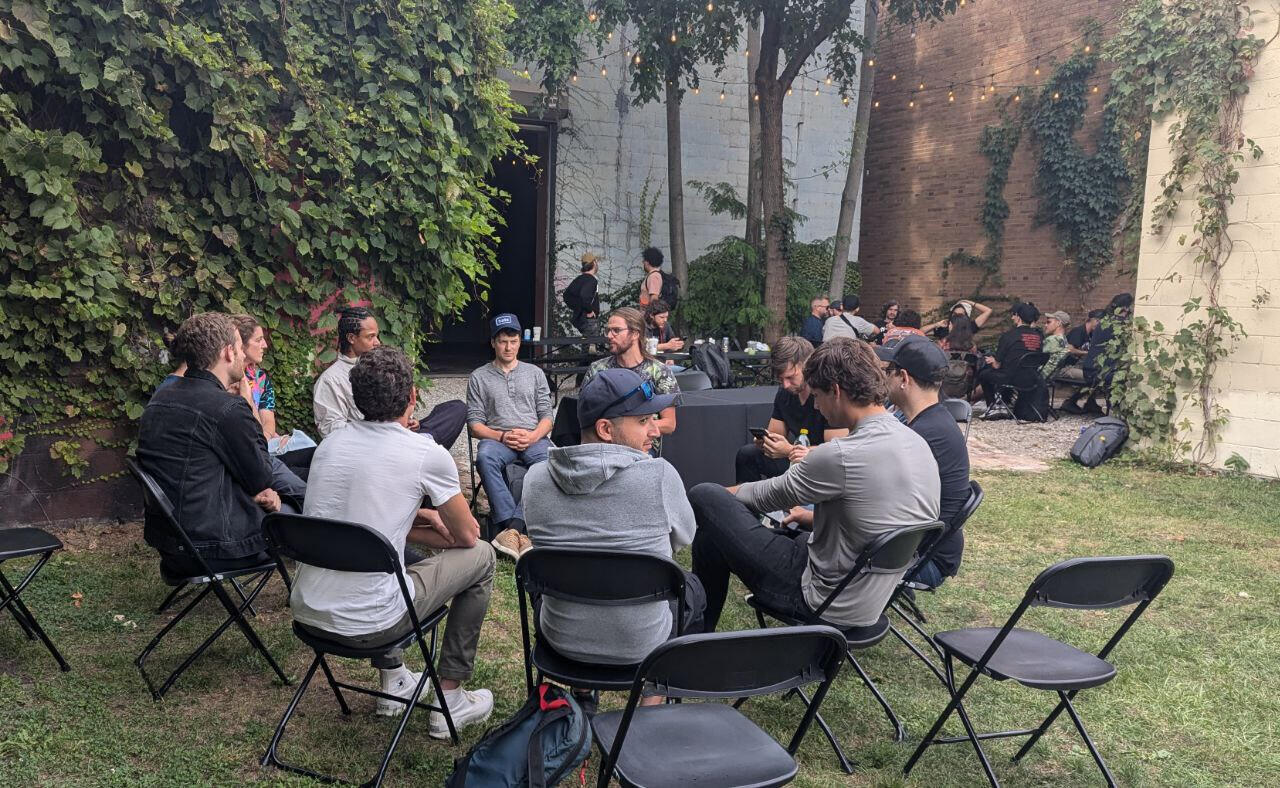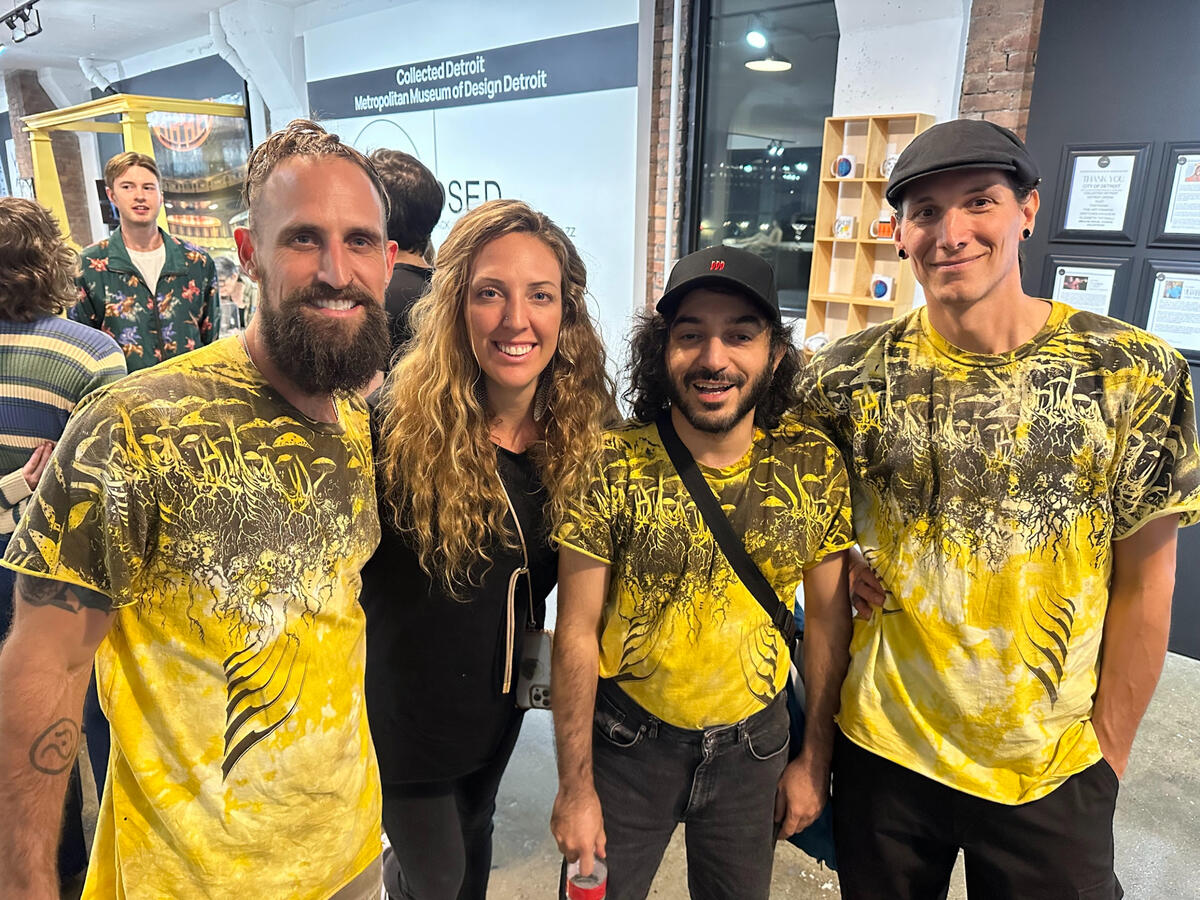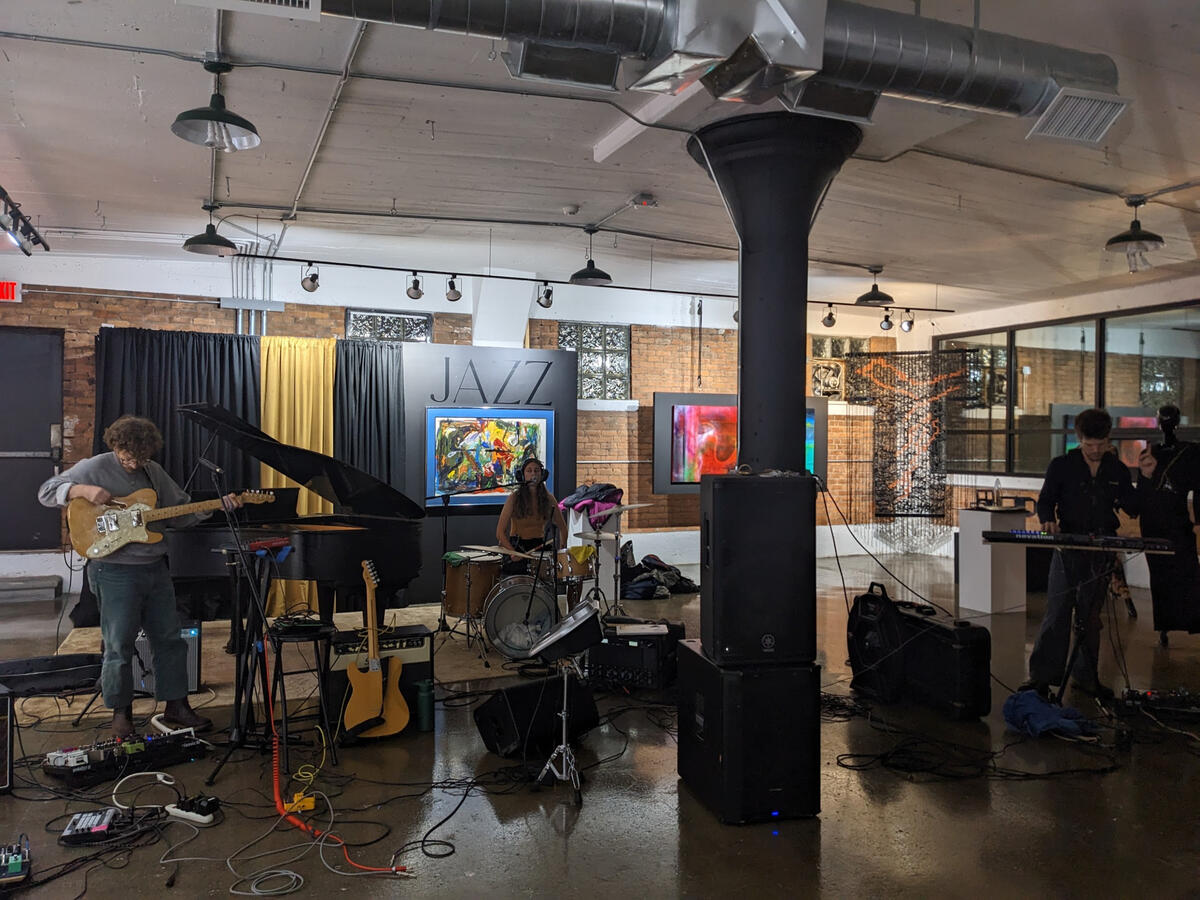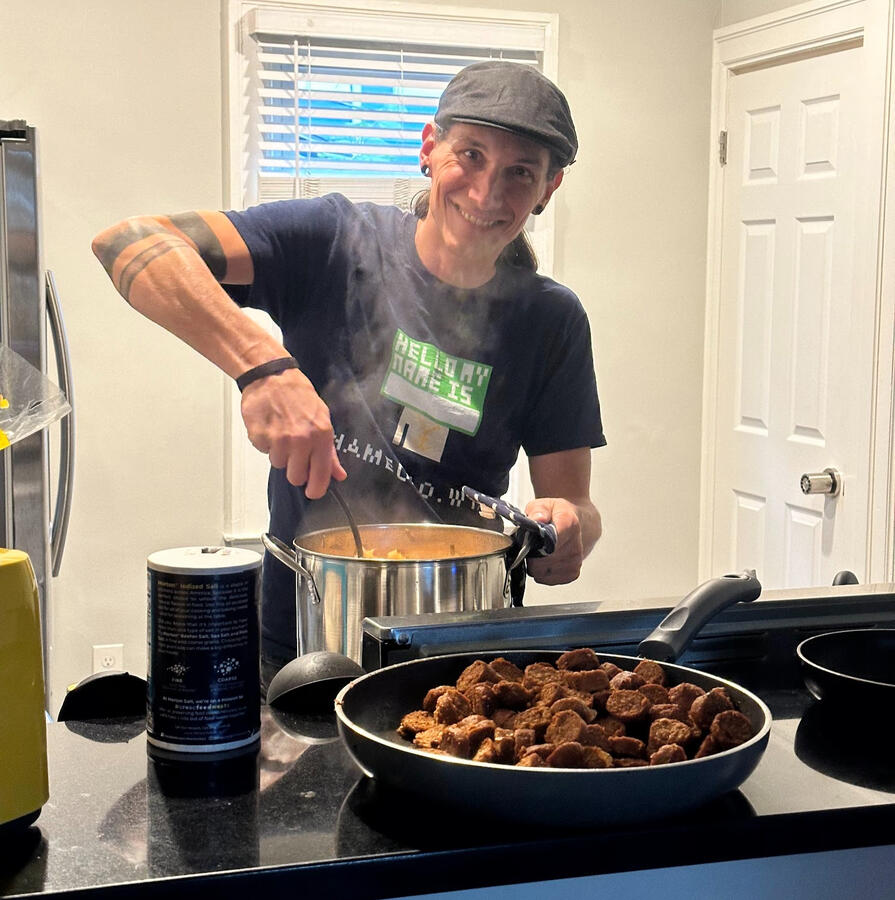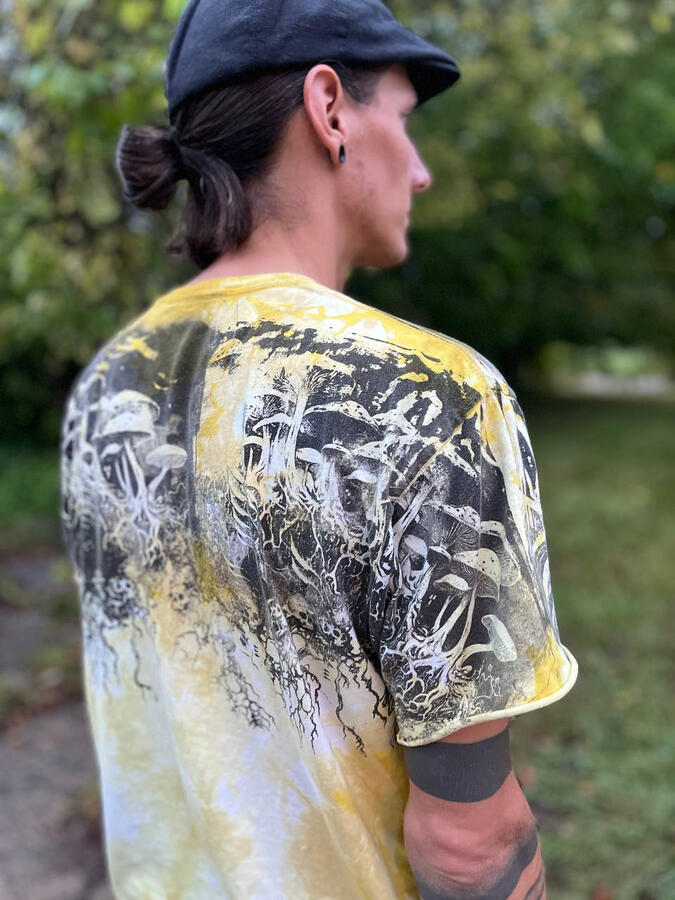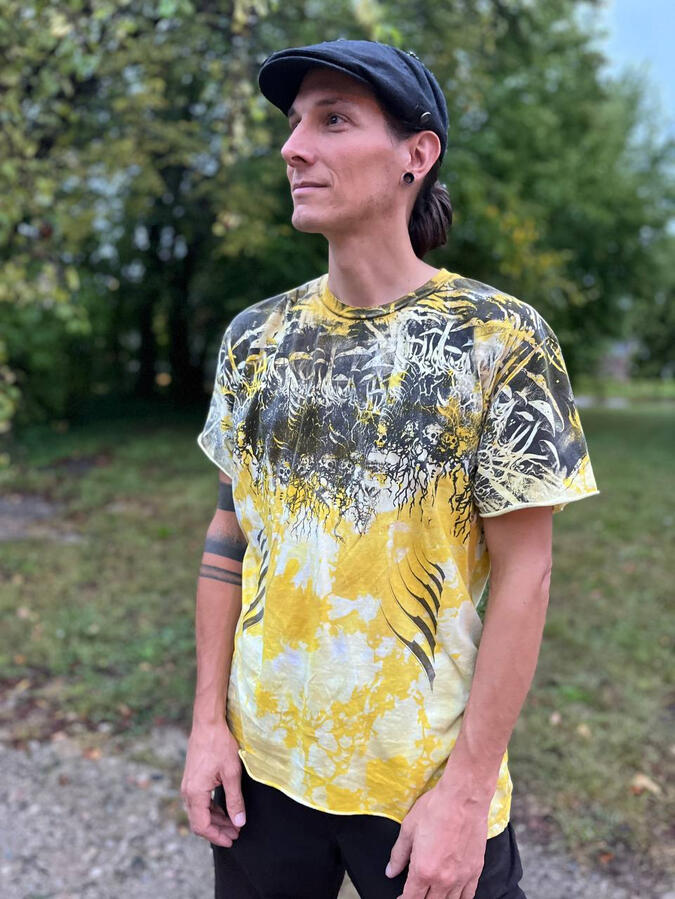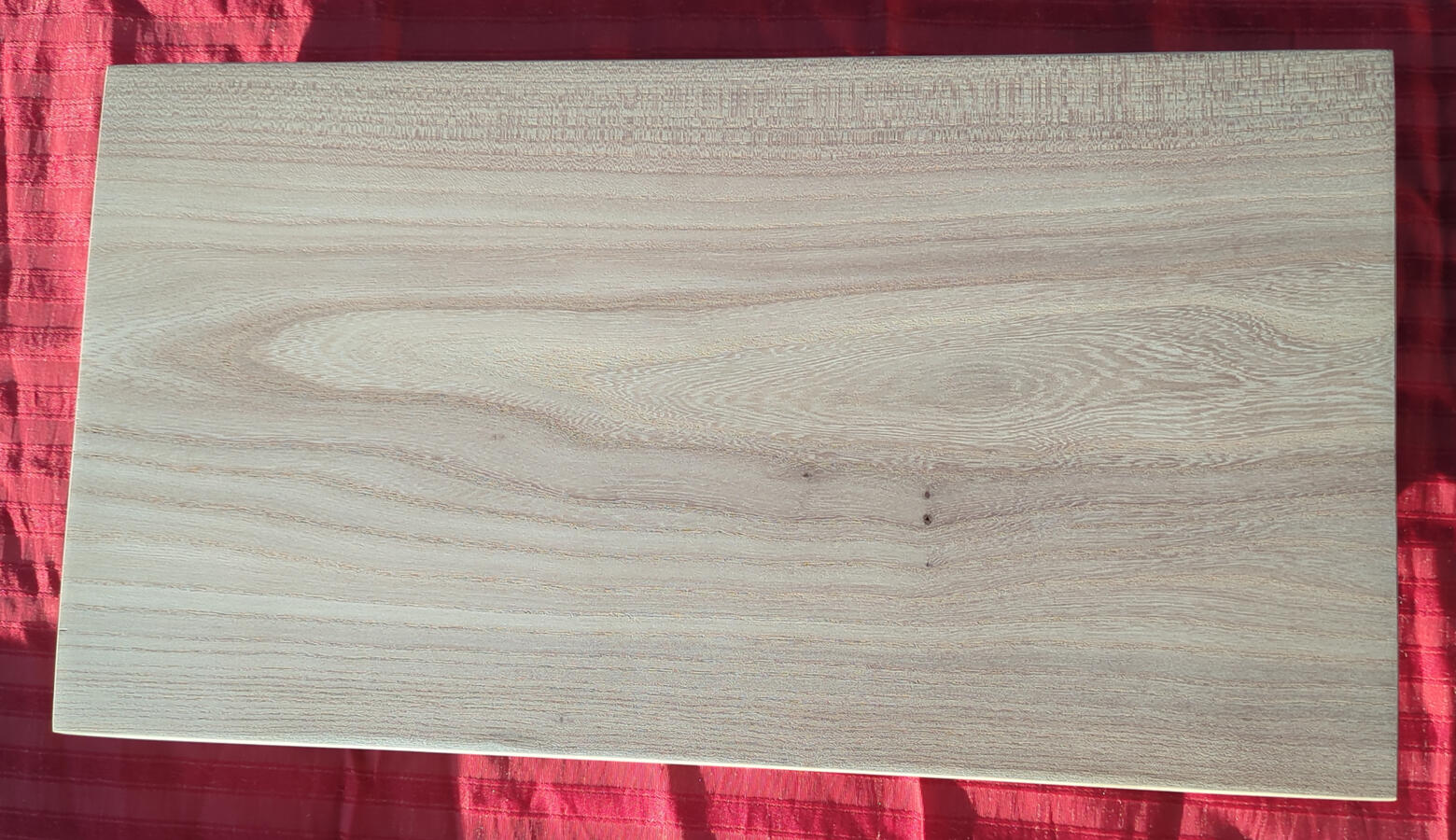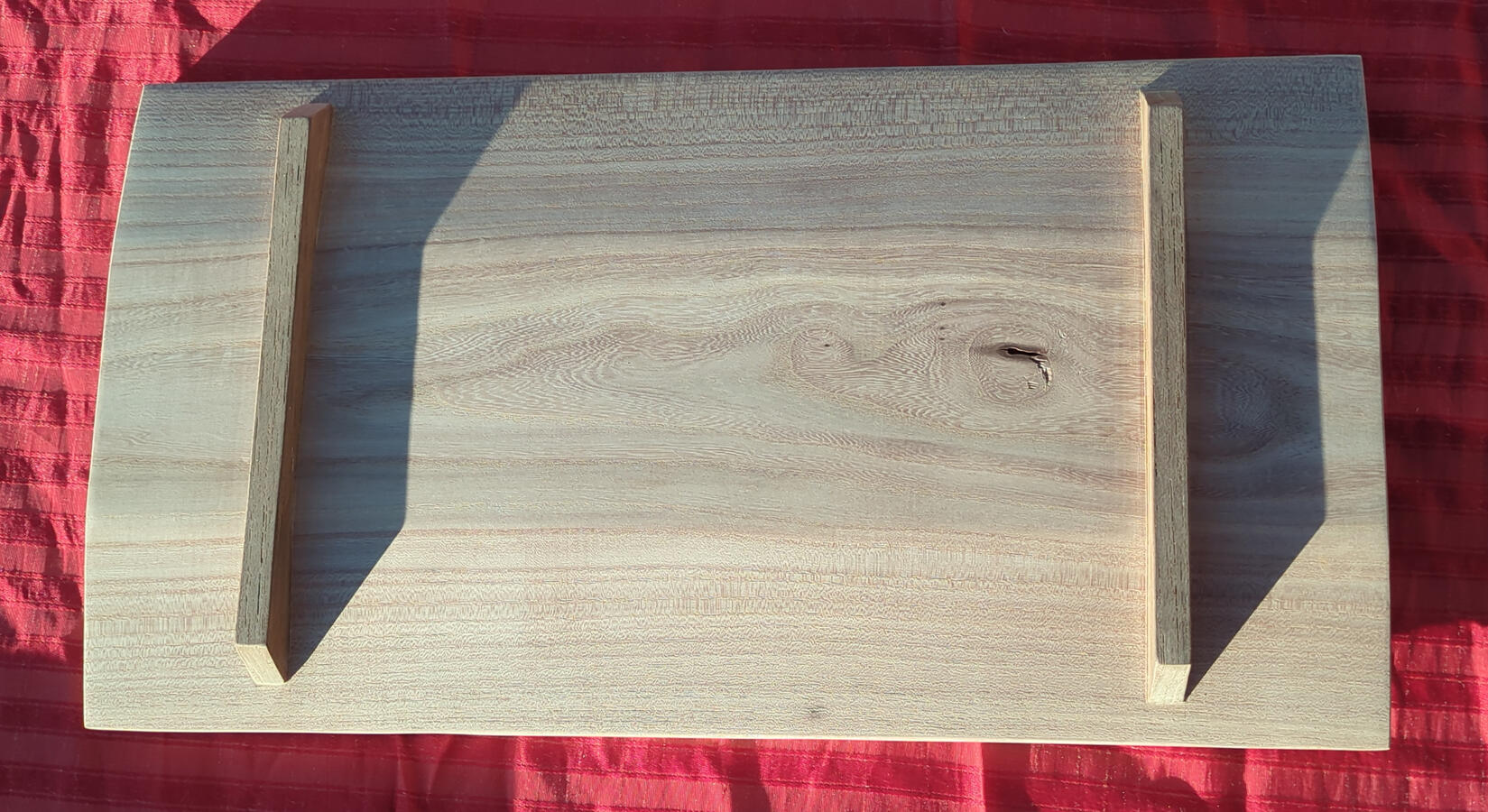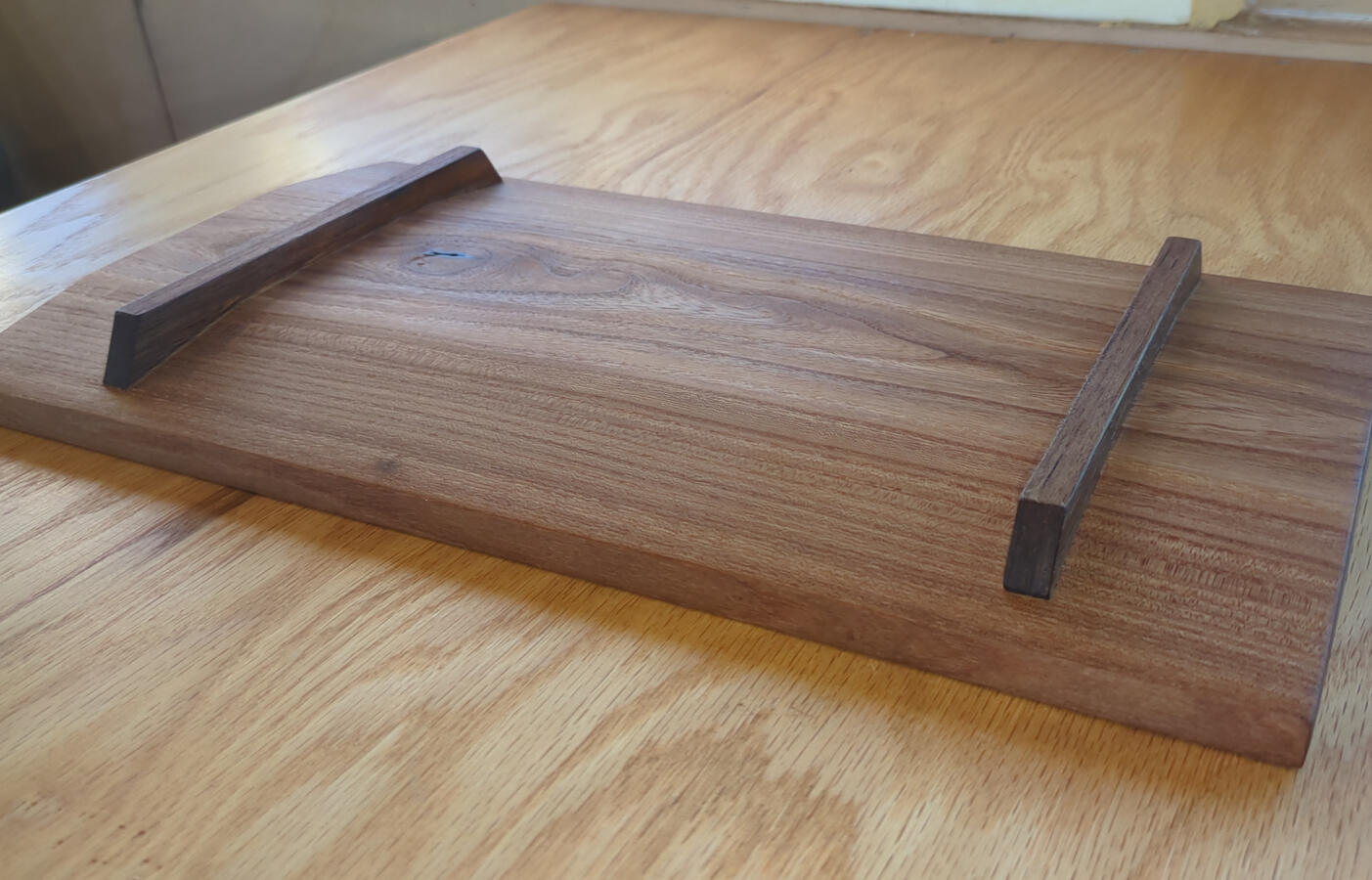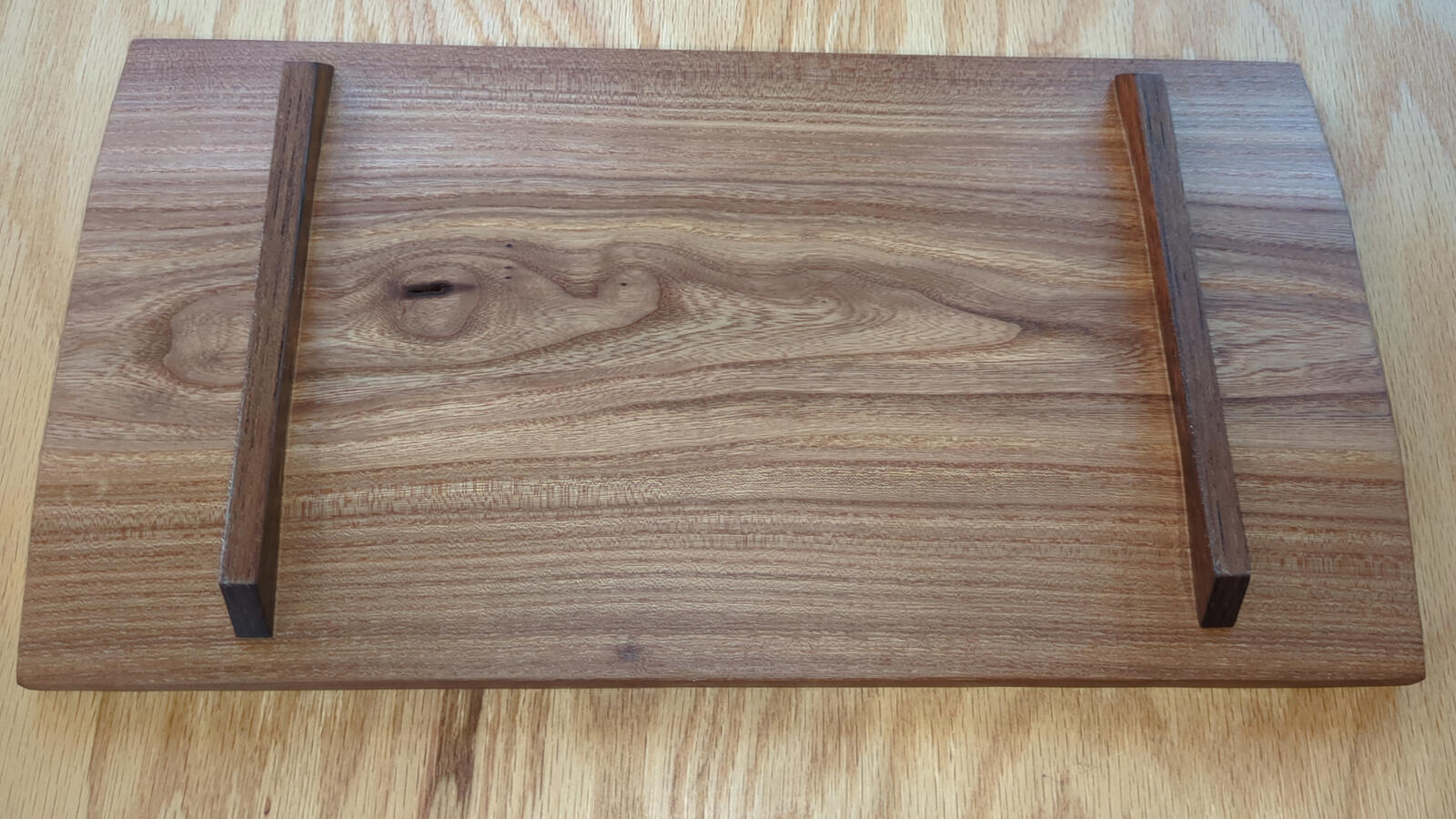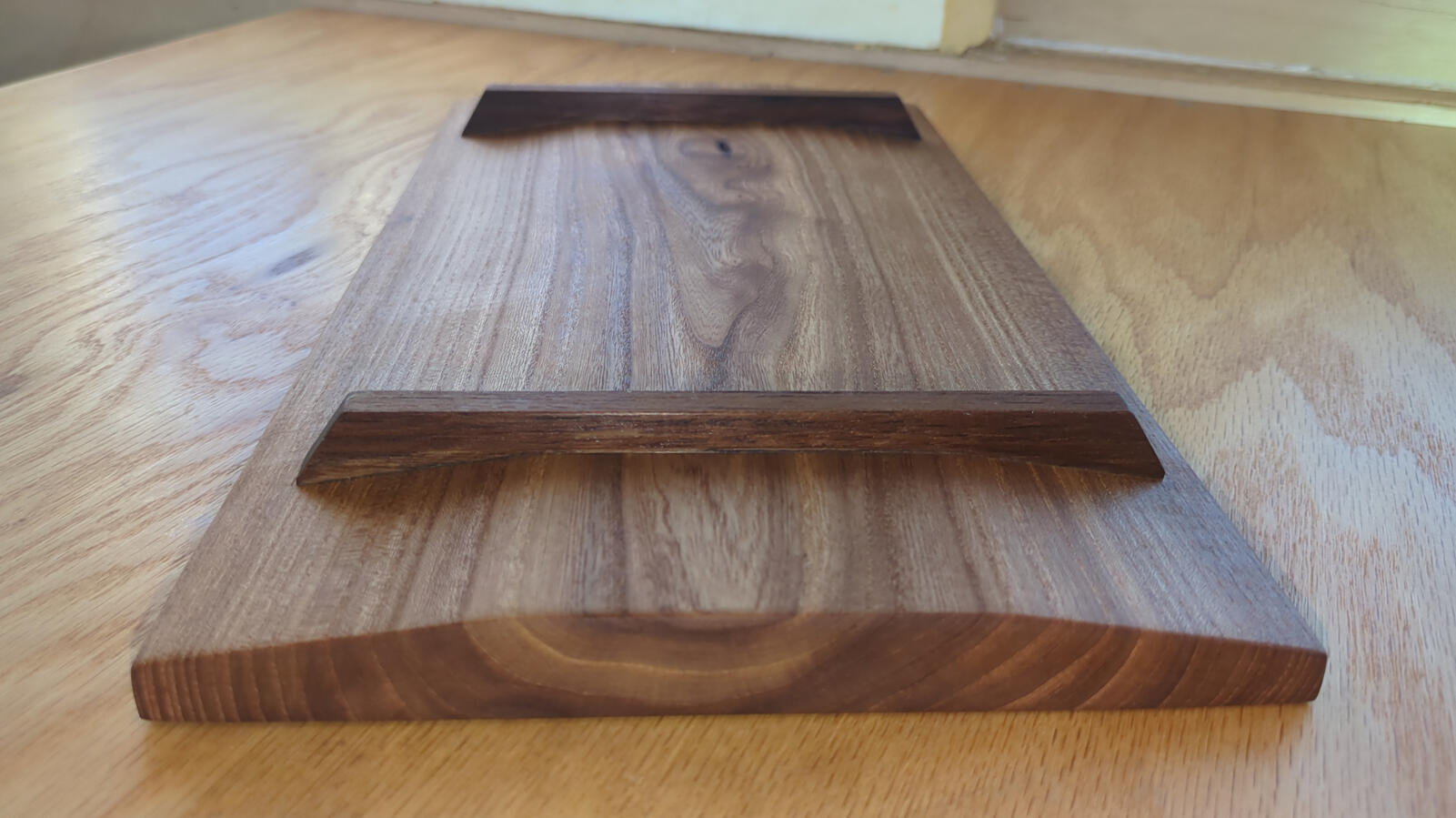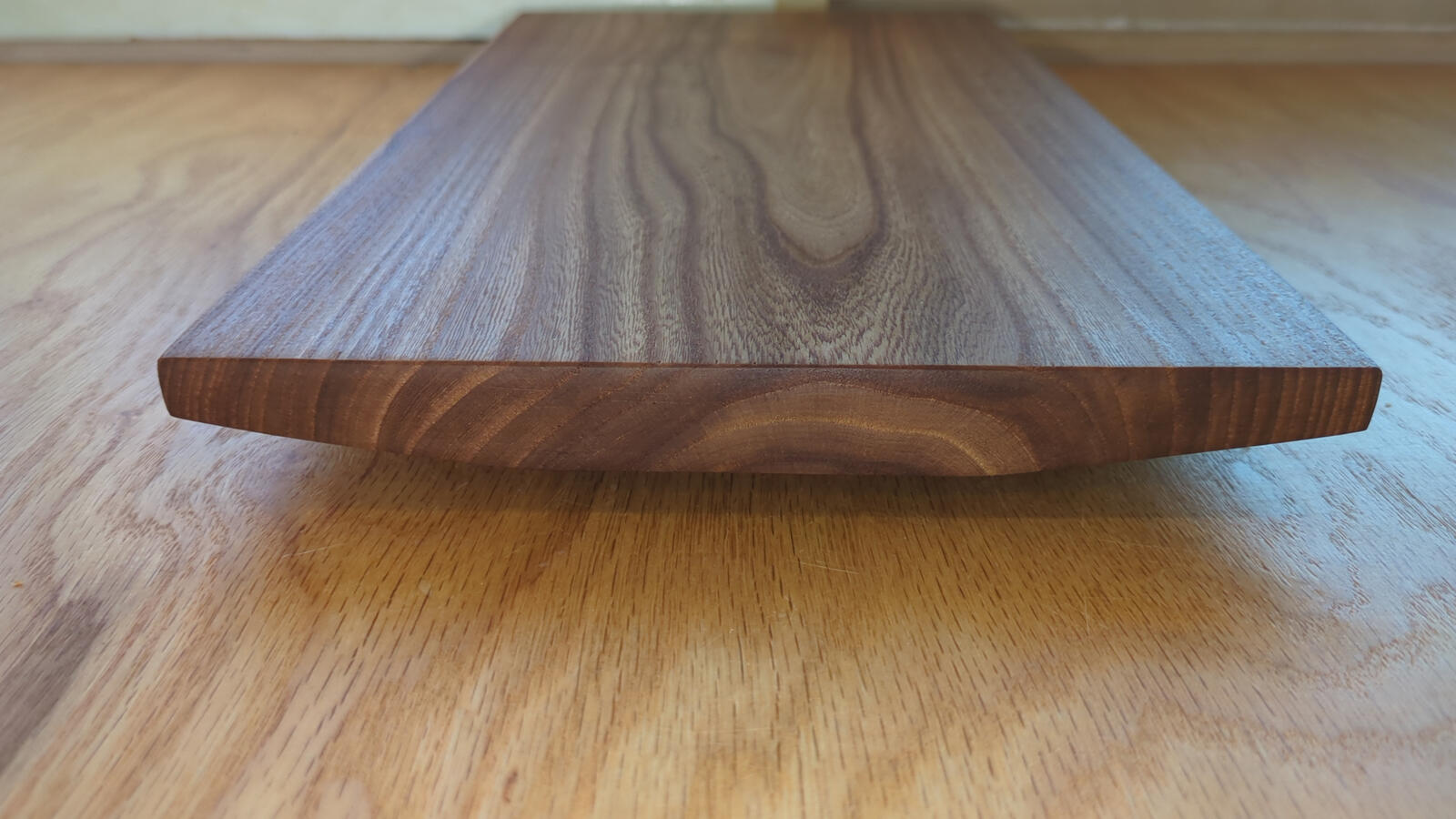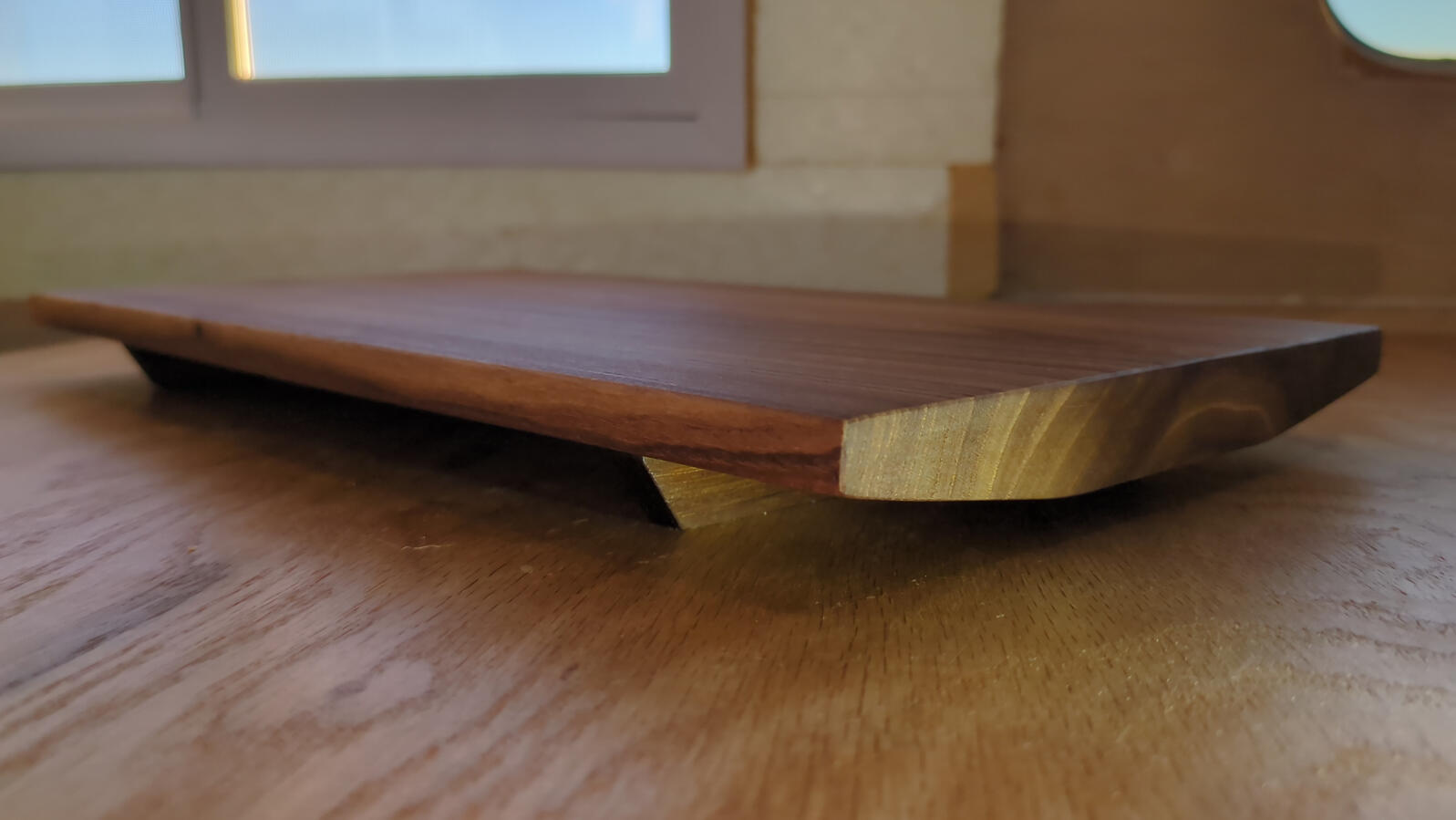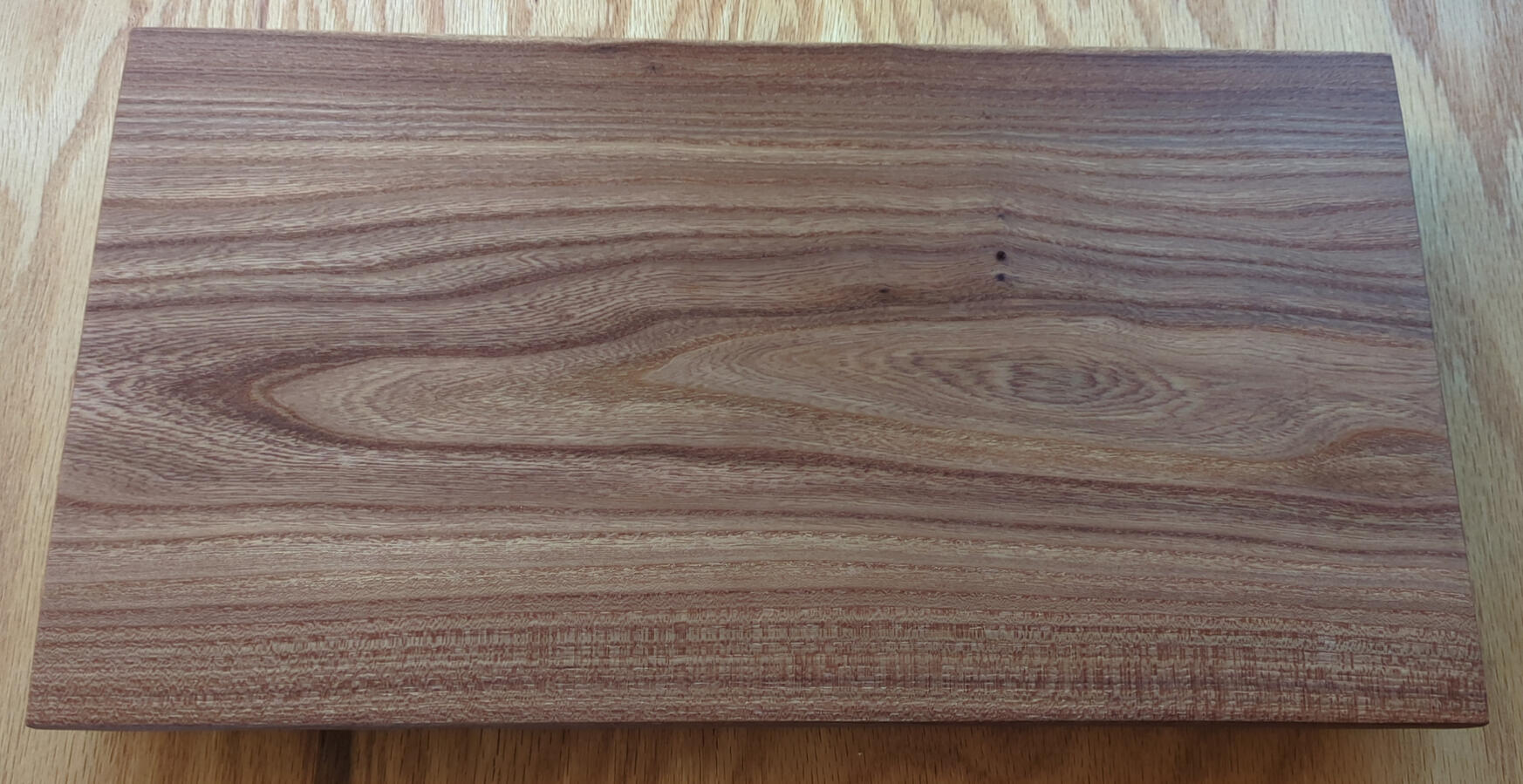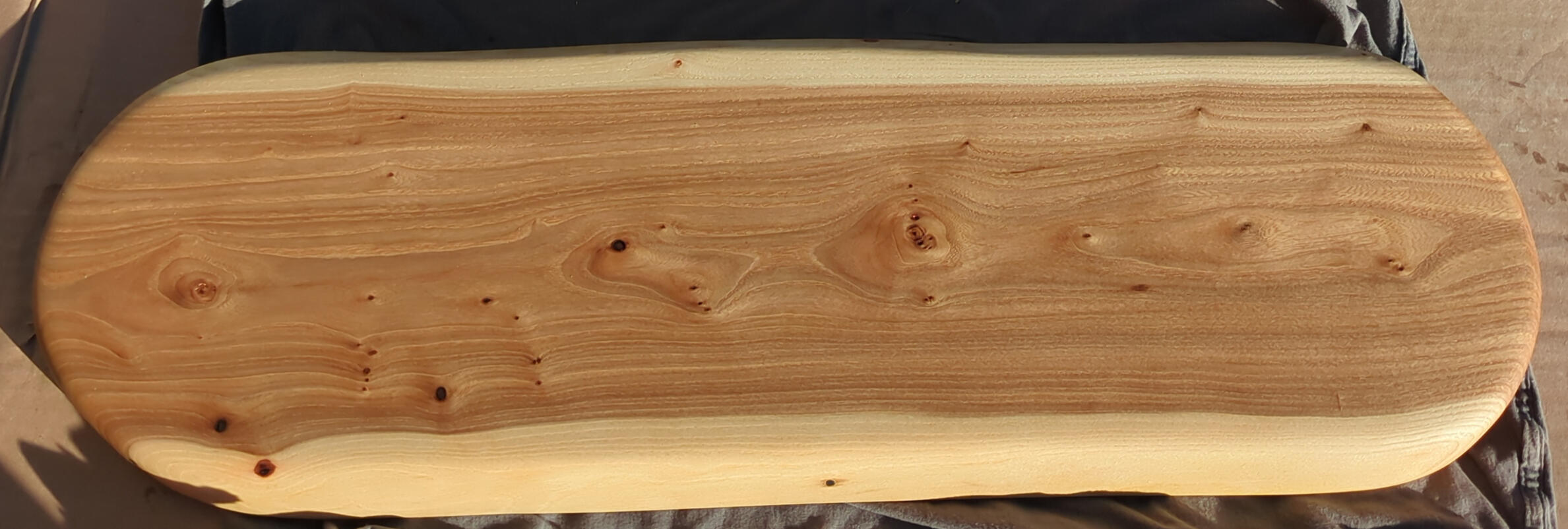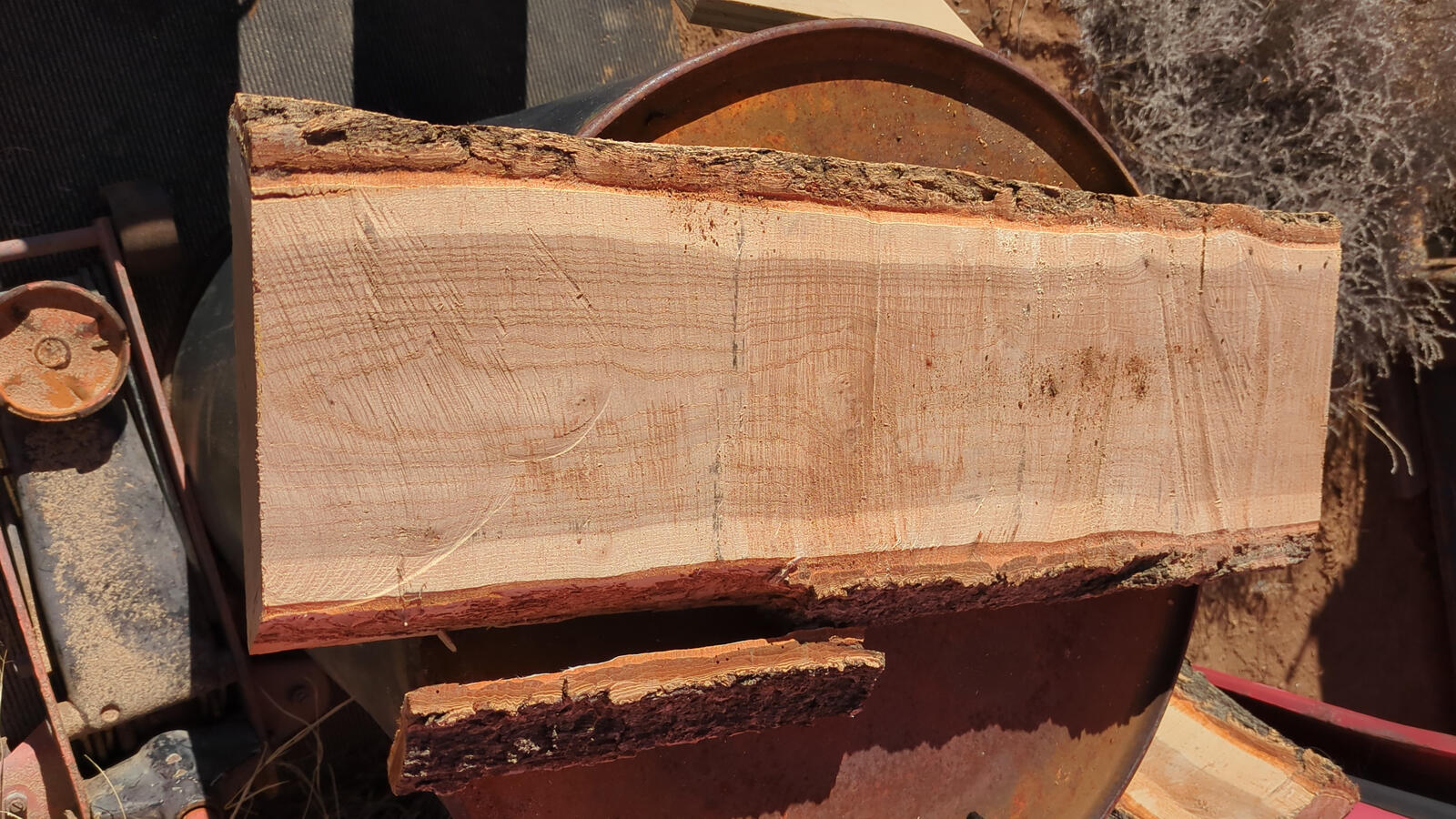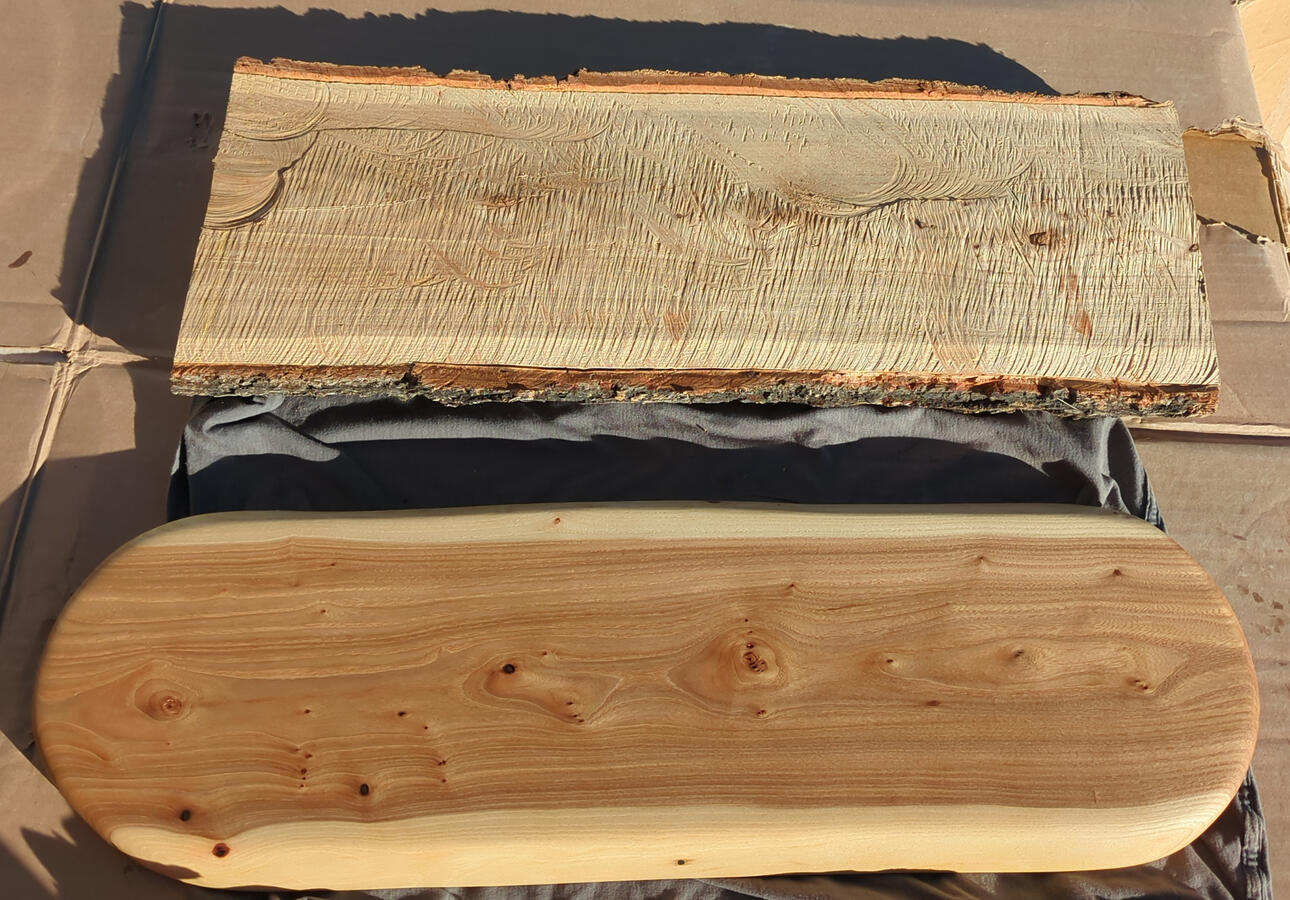Das Brett
From the branches of 'undesired' trees to the heart of your home, Das Brett transforms trees from local yards in New Mexico into one-of-a-kind cutting boards. Each board is a testament to the hidden beauty of nature, revealing patterns and textures that honor the life of the wood. What was once overlooked is now celebrated, a work of art for your home.
Das Holz
At Das Brett, the story begins with local trees, each one carrying a narrative etched in its grain. The utility of the cutting board is secondary to its artistry, where every piece is an homage to the impermanence of life. These boards blur the lines between function and form, inviting you to both admire and use them. Whether hung on the wall, displayed as a centerpiece, hosting a charcuterie spread, or to vigorously cutting your vegetables, each board is a reminder of nature’s fleeting beauty.
Siberian Elm
Often dismissed as an invasive species, Siberian elm (or Chinese elm) has become an enduring character in New Mexico's landscape. Introduced for shade and shelter, its resilience has become a challenge. Yet within its bold, sprawling growth lies a striking beauty—wood with character, marked by its journey through both neglect and persistence.
Pinon Pine
Piñon pine is more than New Mexico's state tree; it’s a symbol of resilience and nourishment. Revered by Native Americans for its edible nuts and beloved in regional cuisine, this tree is deeply woven into the Southwest's heritage. Its wood tells stories of arid landscapes, sun-soaked days, and enduring roots.
W. Red Cedar
Majestic and enduring, Thuja plicata (Western red cedar) is a conifer with a poetic presence. Though not a true cedar, its vibrant hues and enduring fragrance elevate its reputation. The largest species in its genus, this tree’s wood reflects both strength and grace—an enduring testament to nature’s craftsmanship.
Der Prozess
Every board begins with a tree—sometimes standing tall, other times already returned to the earth. The process is slow and deliberate, honoring both the material and its transformation. After felling, the logs are carefully cut into slabs, each 1–3 inches thick. These slabs are then stored to dry—a patient wait of one year per inch of thickness. Only after this careful preparation does the wood reveal its final form, ready to be shaped into something extraordinary.
Die Bretter
Each board is a conversation with the tree it came from. While trees cannot speak in words, their rings tell vivid stories. Stories of seasons of abundance and years of drought, of growth and endurance. Each unique pattern is a record of time, a testament to the life the tree lived and the place it called home.Das Brett seeks to deepen that connection. By tracing the tree’s origins, whether it stood in a quiet yard, shaded a rural road, or thrived against the odds. We bring context to the beauty you hold in your hands. The result is not just a cutting board, but a chapter of a story preserved in woodgrain, ready to be shared anew.
Das Brett - SvenH
Neighbors
A staple to the small community of Carson. One could say that Jerry and Karen Boxberger have shaped this small community to what it is today. Die Bretter of the "Neighbors Series" came from a stout siberian elm on the Boxberger Ranch in Northern NM in the little community of Carson. From a place where people lived that I am deeply honored to have met and been able to call friends.
Neighbors Series
One tree, especially one that has stood the test of time for generations, will provide many boards. This series is evolving over time as we create one at a time for friends and families that knew Jerry and Karen.
Neighbors Lore
To those of you that want to understand the connection of this series to to the land and the people that the Boxberger Baum has touched, we include an excerpt of the local publication "O Pinion" from Carson NM.
Das Brett - Boxberger Series
Back to Barter
Don’t you sometimes wish for simpler times? A life where your biggest concern isn’t sold-out toilet paper, but meaningful connections and honest exchanges. A time when not everything revolved around money. Barter Bretter are an attempt to carve out that kind of space. A return to simplicity, creativity, and connection. These boards aren’t for sale. You can’t buy them. But you can barter with me to get one.
Barter Series
Though the first barter board originated from the Boxberger Baum, it became the beginning of a new series. One that carries the emotional connection of its origins at the Boxberger Ranch to its new owners. The Barter Series aims to weave the spirit of meaningful exchange with the deep meaning of the Zen Series, connecting both sides of the barter through a shared appreciation for craftsmanship and creation.
Barter Lore
The Barter Bretter Series was born from an unexpected connection. A reminder of what it means to truly value the things we create, share, and possess. It’s not just about the boards; it’s about honoring a tradition as old as humanity itself: bartering.
Barter Series Origin
I found myself at a conference in Detroit, a gathering of thinkers, creators, and dreamers. Among them was Sinjun, a textile artist whose presence became an unexpected gift. Sharing an bnb, we began as strangers that over the course of those few days, shed assumptions, surrendered expectations, and opened ourselves to deep, transformative conversation.
We spoke of love, loss, fear, and the weighty questions of life. These weren’t just discussions, they were the foundations of a bond built on transparency and shared humanity. That experience changed me, not just because of Sinjun’s kindness and unquestioning vulnerability, but because it reminded me of something I often forget, and have yet to learn fully in life. When we approach the world without judgment or the arbitrary expectations we create for ourselves, we discover not only richness in others but a deeper truth about our own capacity for connection.Over the months to follow, we stayed in touch. One day I shared my boards with Sinjun. Not as a product to sell, but as an extension of myself, a window into something I had poured my time, passion, and soul into. Sinjun didn’t just see a cutting board; he saw the story within the wood, the hours of care in its creation. He saw what I hope others see: the beauty in transformation, in simplicity, in craft.His response? A joyful proposition to trade one of my boards for his creations. Clothing, crafted with care and intention. And in that moment, the Barter Series was born.
Bartering in today's age
Bartering is a practice as ancient as humanity itself. Before currency, before convenience, there was exchange. Exchange of goods, of time, of skill. And at its heart was something deeply human: the recognition of value, not as dictated by a price tag, but by effort, creativity, and care. By passion.In today’s fast-paced, click-to-buy world, it’s easy to lose touch with that sense of value. We’ve traded the satisfaction of creation for the convenience of consumption. We’ve forgotten the joy of exchanging something made with our own hands for something another has poured themselves into.Picture a warm home, heated by wood you cut down in the forest. You hauled it back with sweat and tears, split it with your own hands, and stacked it to dry until the next winter arrived. Feel the warmth in that home, the deep appreciation for the hours and days it took to ensure that cozy evening. Now, contrast that with calling the utility company to pay your gas bill and turning on the radiator. One process is steeped in effort, patience, and pride; the other, convenience stripped of connection.Bartering invites us to slow down. To appreciate. To connect. It reminds us that the things we surround ourselves with should mean something, should tell a story. It’s not just about trading objects; it’s about exchanging intention, love, and the invisible fingerprints of effort and care. Things are just things. Inherently replaceable. But what persists beyond the things themselves are the memories.
The Beauty of Bartering
A cutting board, crafted from a piece of wood that might have otherwise been discarded. Its grain tells a story of seasons past, of growth and struggle. It is transformed into a thing of beauty, with care and patience, waiting for someone who will truly value it as it is. Value it because they had to give up something they valued as much or more as I valued the board. Every board I create I sit with for days or even weeks before I am able to let it move on. I may never use it, but simply admire it. Thinking about it's new home. Inspecting every wave, every edge, every color variation. Why? There is no why. Simply to appreciate it for what it is. Something I created because I wanted to. Nothing more, Nothing less.And in return? Perhaps a woven scarf, a handmade bowl, a painting born of someone else’s creativity and passion. Bartering transforms these exchanges into moments of gratitude, living proof that appreciation is a two-way street. It’s as much about recognizing another’s effort as it is about sharing a piece of your own soul. Just as cutting your own wood deepens your appreciation for warmth, creating something with your own hands fosters a profound connection to its purpose and the person who receives it. It’s a small act, but it carries with it the weight of something timeless.This series is an experiment, a challenge to reconnect with the things that matter most. It’s a call to celebrate craft, to embrace the beauty of imperfection, and to find meaning in the stories behind what we own.By choosing to barter for these boards, you’re not just acquiring an object. You’re participating in a shared tradition, one that honors creativity and connection in a way that buying never can.So, what do you have to offer? A song, a sculpture, a loaf of freshly baked bread, an IOU? Whatever it is, let it come from your heart. Let it carry your story. Because here at Das Brett, it’s not the board you take home that matters most, it’s the memory we create together.
Das Brett - Barter Series
Zen

This board began its life with a flaw. When I picked it up from my stack of drying slabs, one side had splintered away, leaving a gaping area that would make the board too thin once finished. But instead of discarding it, I decided to start shaping it anyway.My process often starts with the wood itself. I pick it up, turn it over in my hands, and listen. Yes, I know how that sounds. “What a cliché,” right? But in a way, that’s exactly what I do now. I look at the wood and let it guide my thoughts. Tell me what it can become.In this case, I thought, What if I taper both sides of the board until the “defect” disappears? So I began hand-planing each edge, shaping a slight taper until the underside of the board started to take form. The result? A piece with a strikingly pleasing visual flow.But it wasn’t done. As it stood, it wasn’t usable. So I went back to my stash of wood and found two strips of what I believe is teak. These strips came from a neighbor’s discard pile in Florida over a decade ago, when I used to live there. My neighbor, a “boat person”, had cleared out their garage, leaving behind this teak, a wood often used in boat-building.I realized these teak strips, about 3/8 inch thick, could serve as runners, or feet for the board. With each step in the process, the board began to remind me of a Japanese aesthetic. Clean lines. Minimalist form. Once I saw this connection, I leaned into it, letting the board guide me further.The rest of the design became clear. Beyond the tapered bottom, the board needed to embrace simplicity. A stark departure from my usual style. I’ve always worked with natural, organic lines in slabs and end-grain boards. But this board was different. It wanted to be rectangular, with sharp edges and precise corners.This new direction gave me an excuse to use more hand tools. Planes and knives from my collection. The process felt meditative, deliberate, and deeply satisfying.Below are some (admittedly not enough, I’ll work on that!) photos of the process and the finished product.
Zen Series
Zen Lore
Once finished, I sat with Zen 1 for a long while, simply observing it. Admiring its color, its shape, its simplicity. I reveled in the flow of the growth rings, the stippling in the end grain, and the subtle variation in its tones. My eyes lingered on the top edge of the board, where a sliver of sapwood remained. Not entirely, just enough to create intrigue. It reminded me of how lingerie accentuates a body’s features: a hint of contrast that draws the eye.I noticed imperfections I had missed. The tiniest chip-outs along the end-grain edges, remnants from squaring the board with my circular saw. Instead of frustration, I felt gratitude for these flaws. They felt like a hidden maker’s mark, a quiet nod to the process and the tools that shaped it.Running my fingers along its edges, I began to wonder about the life of the tree, or perhaps just this branch of it. I counted the rings. A remarkable time capsule, etched in wood. I lost myself in the irregularity of the lines, tracing the deviations and drifting back in time. Some rings were thick and wide, others tighter, denser. The tree had grown fast in its early years here in northern New Mexico, with plenty of water. But later, its growth slowed, the tighter rings marking drier seasons.It made sense. My knowledge of the local weather and the stories I’d heard from neighbors aligned with what the board was telling me. I was in awe of this tangible connection to the past, hidden in the grain of this simple object.For a moment, I questioned my sanity. Who sits and stares at a piece of wood for an hour? Apparently, I do.But this piece brought me something powerful: an appreciation for deep thought through observation. It taught me to accept the validity of the intrigue that comes from slowing down and simply looking.I know some readers may dismiss this as spiritual nonsense, and truthfully, I might have been one of them not so long ago. But I’ve grown, much like the tree through its years, into someone stronger, more reflective, and unafraid to lose myself in the story of a piece of wood.A truly Zen experience, indeed.
Das Brett - Zen Series
